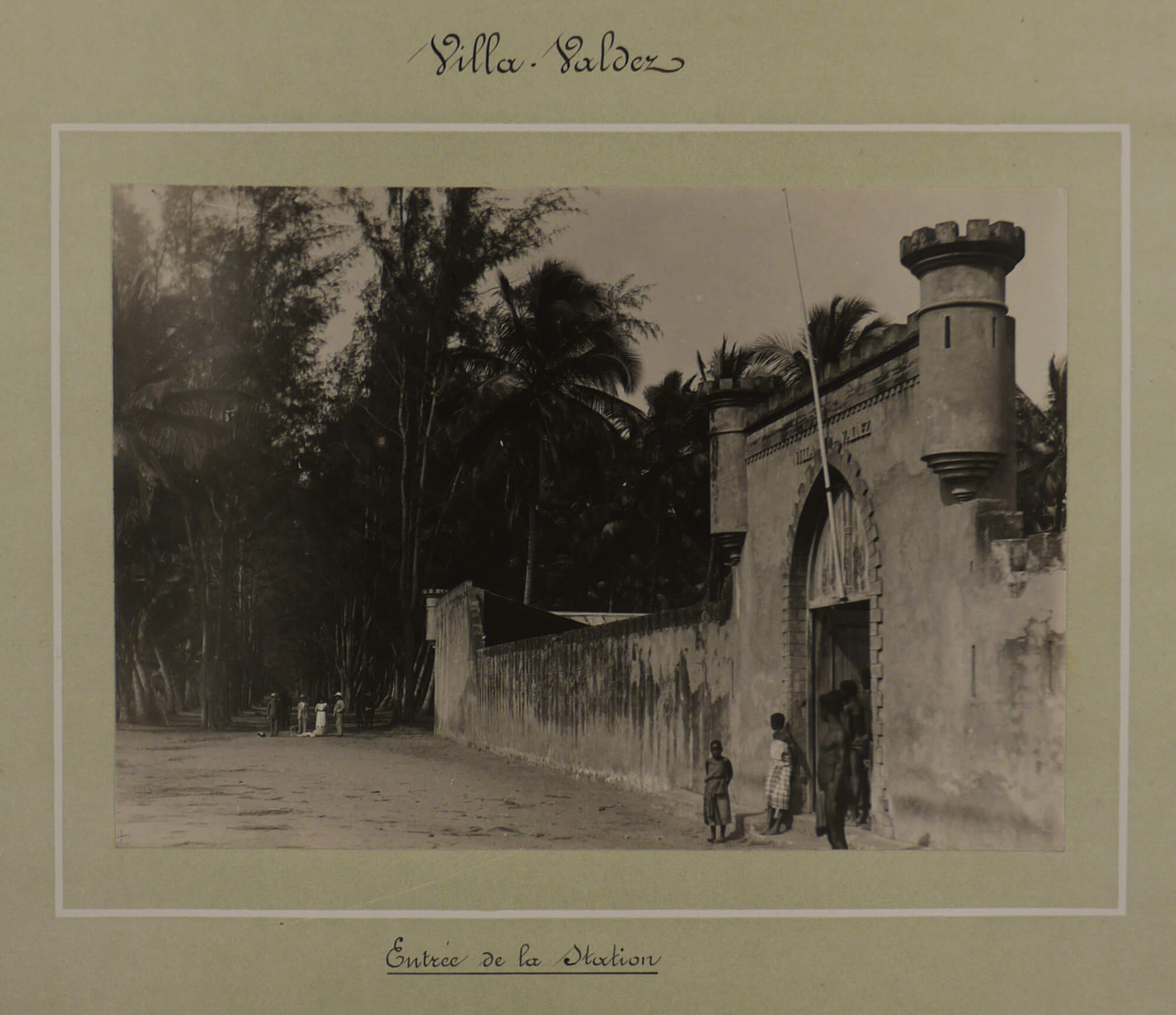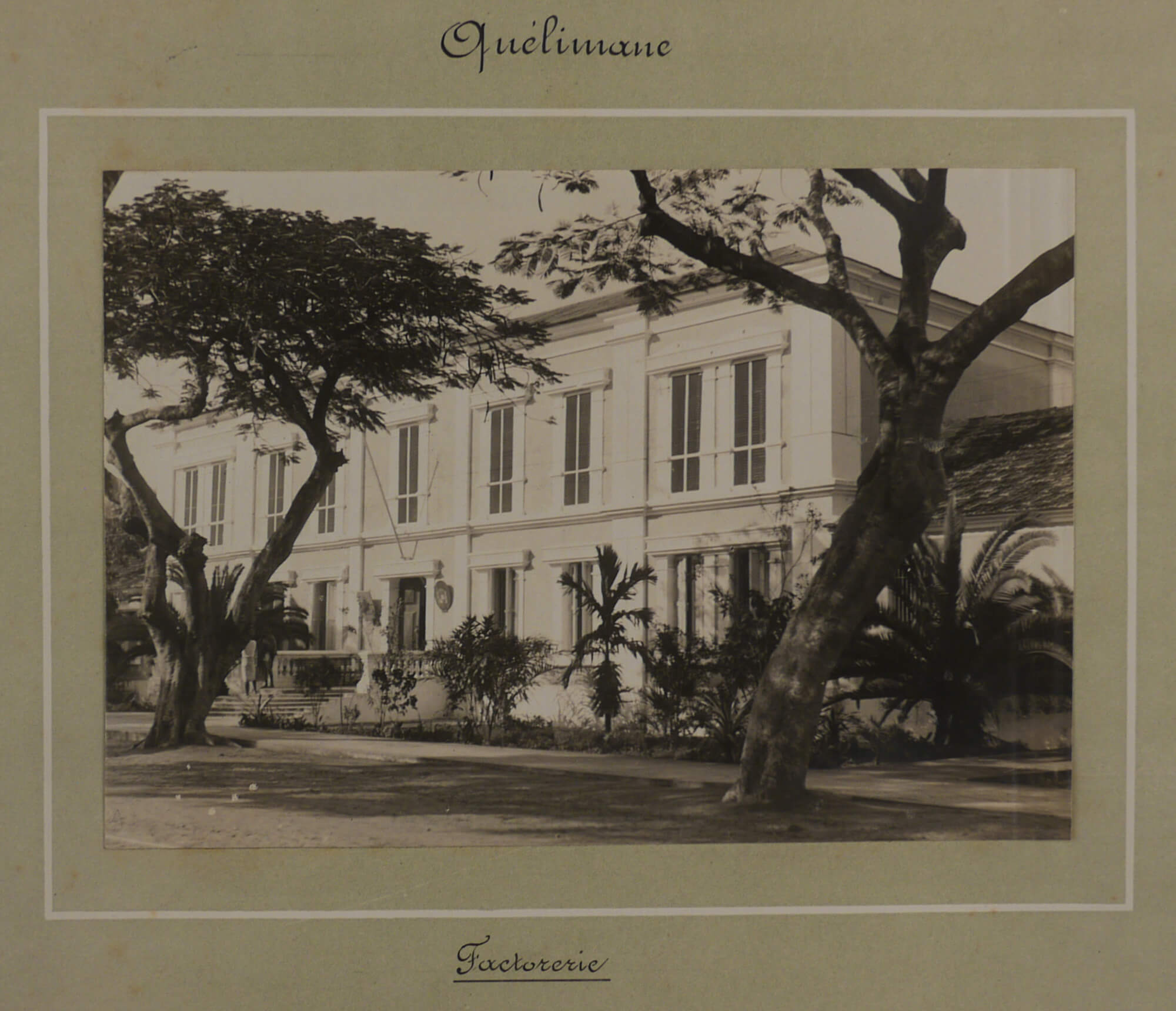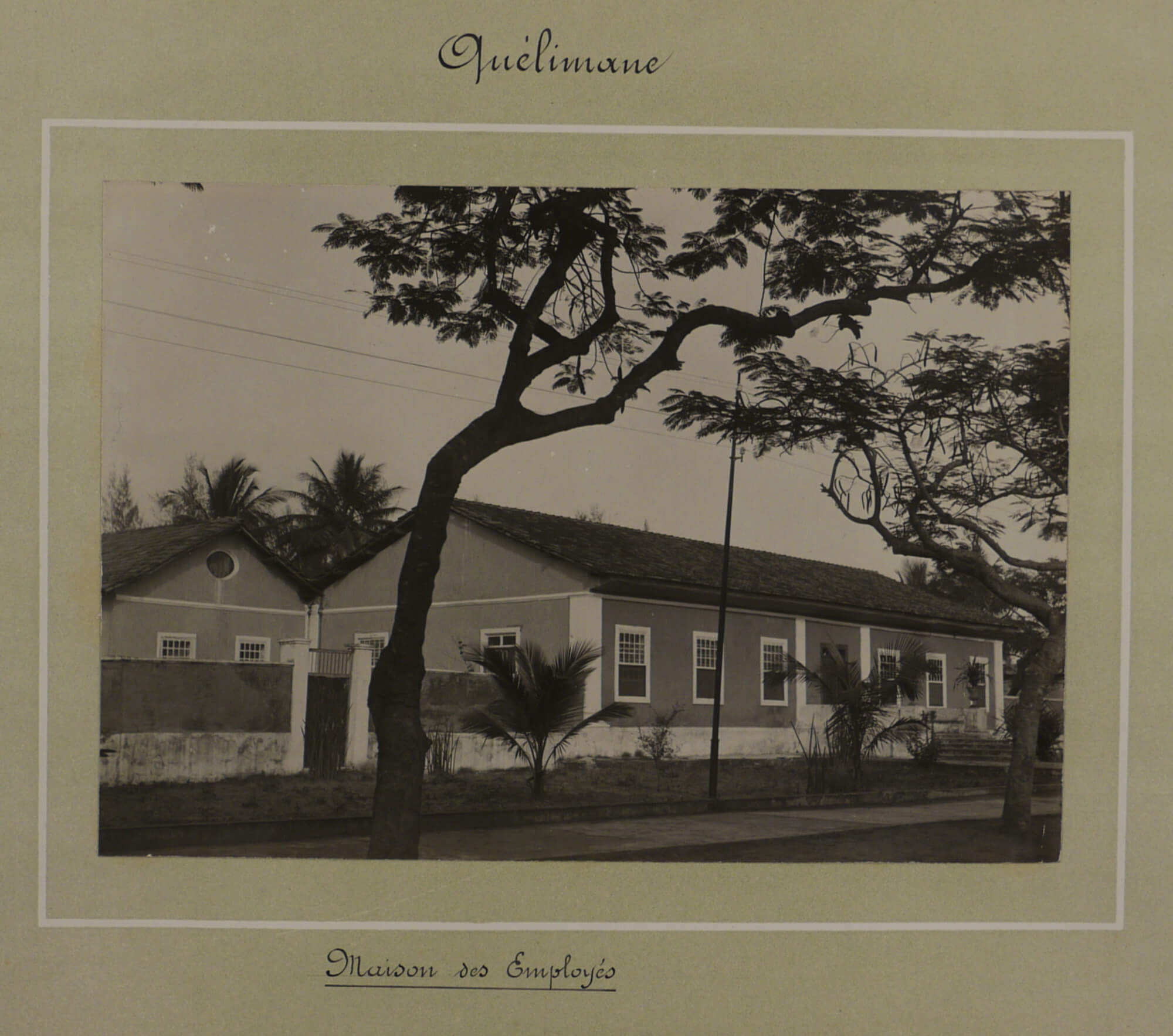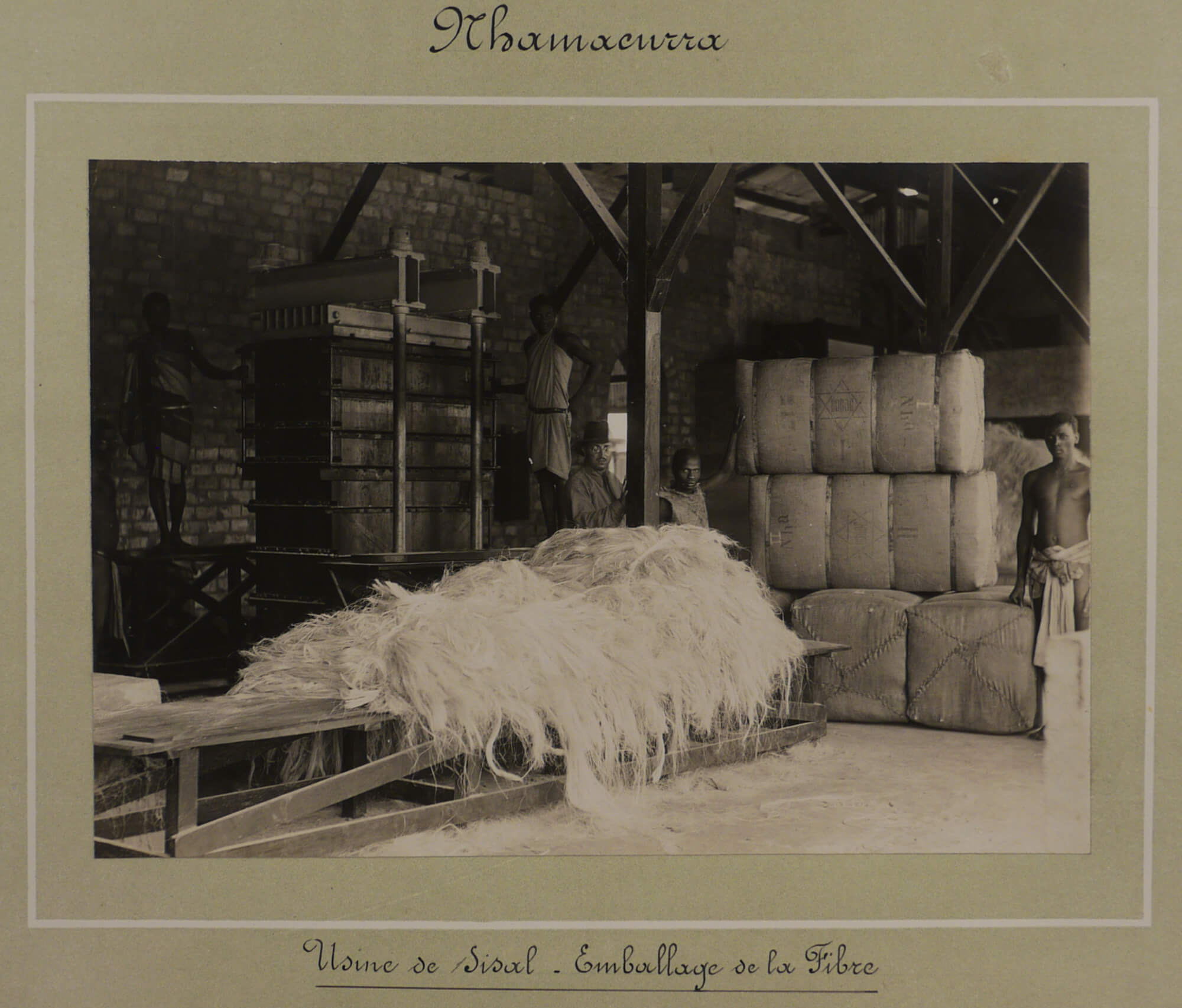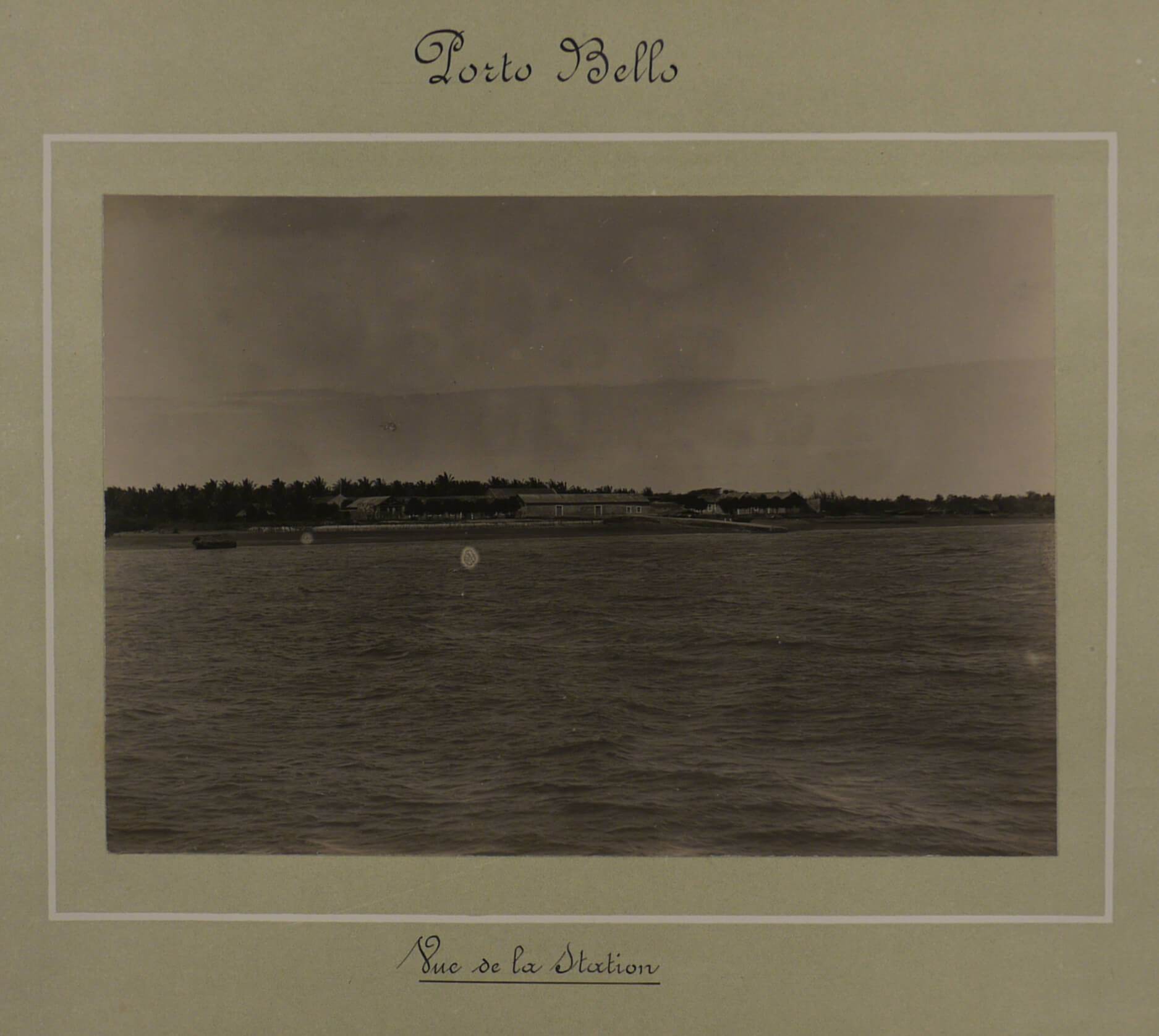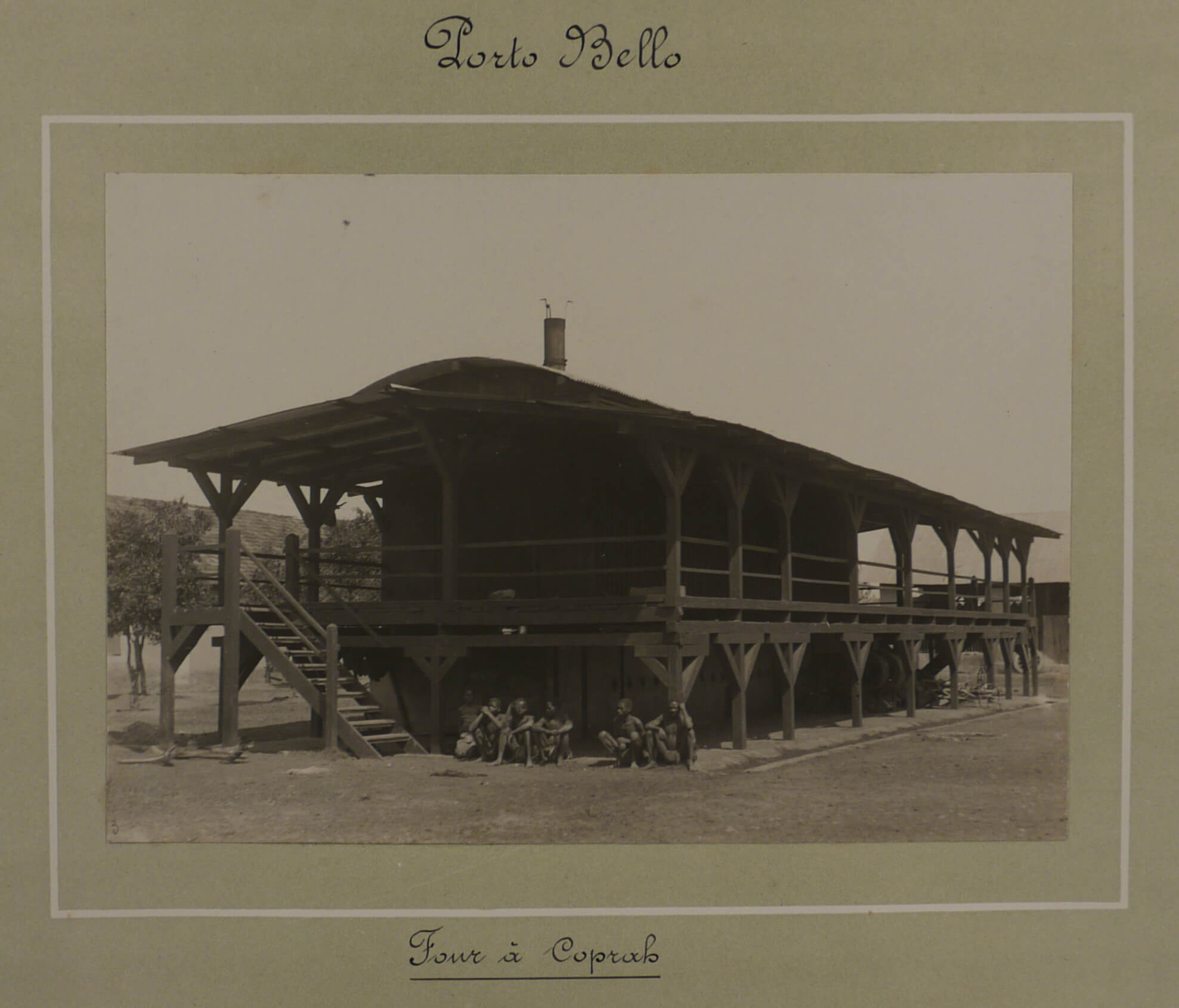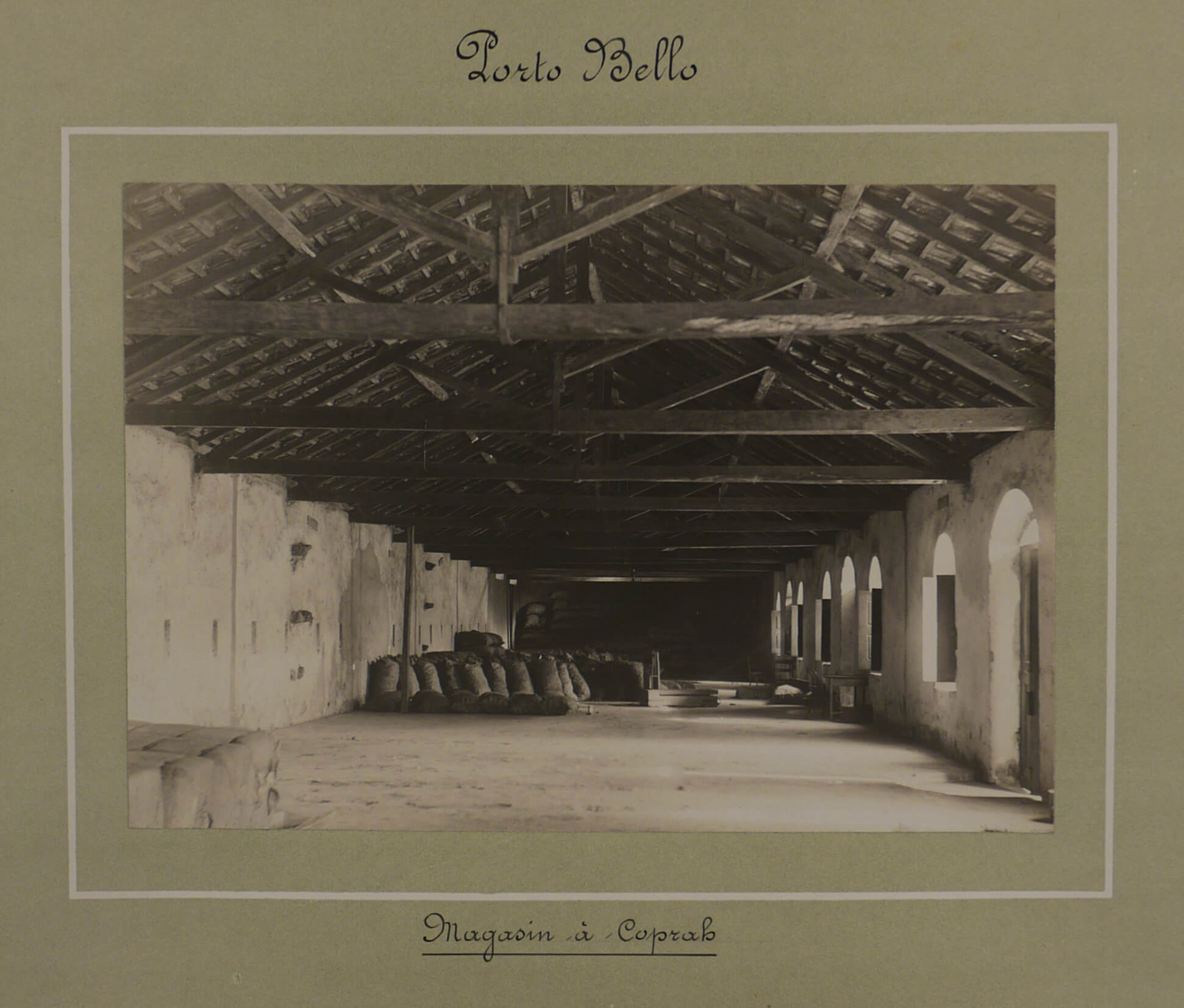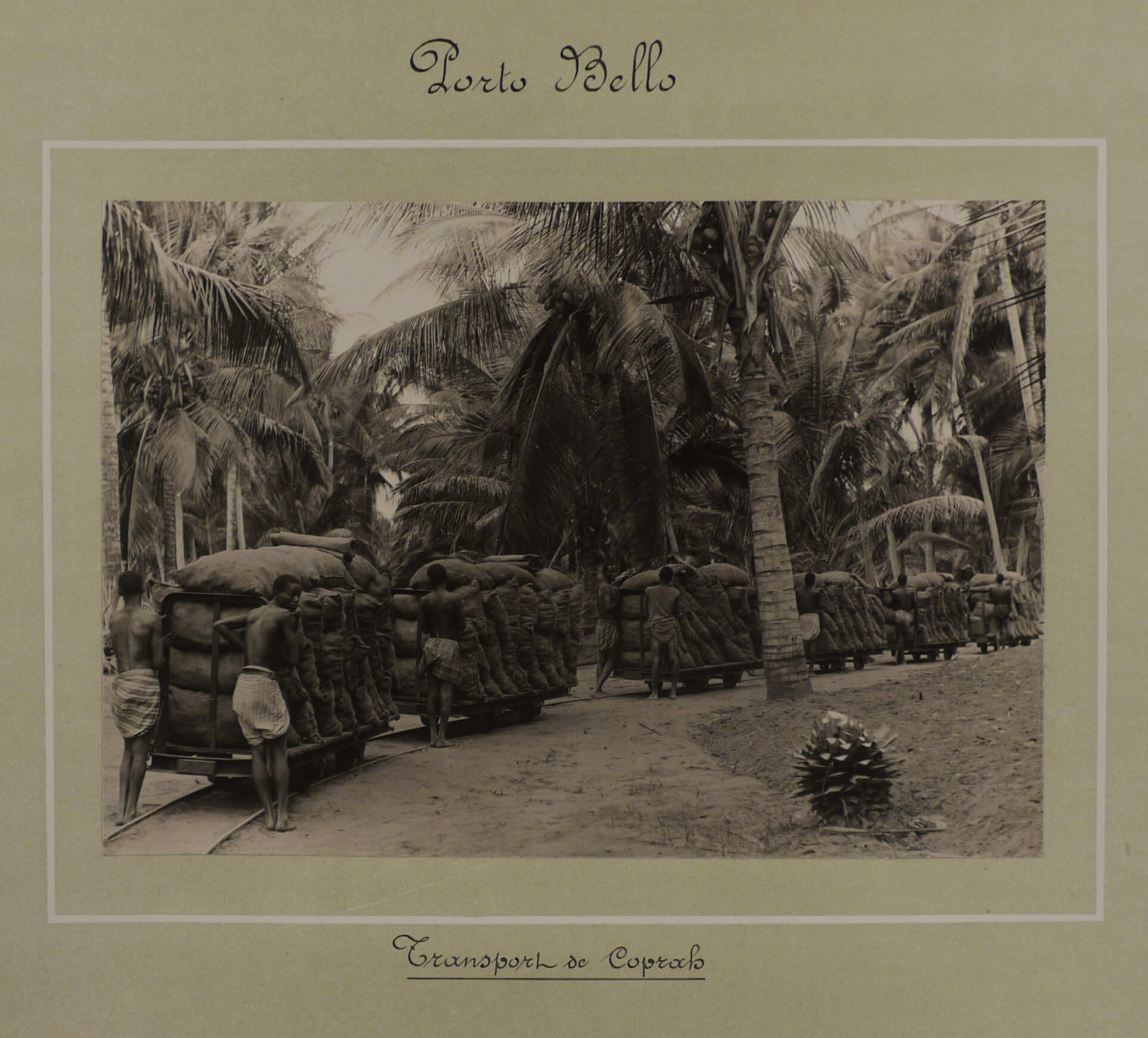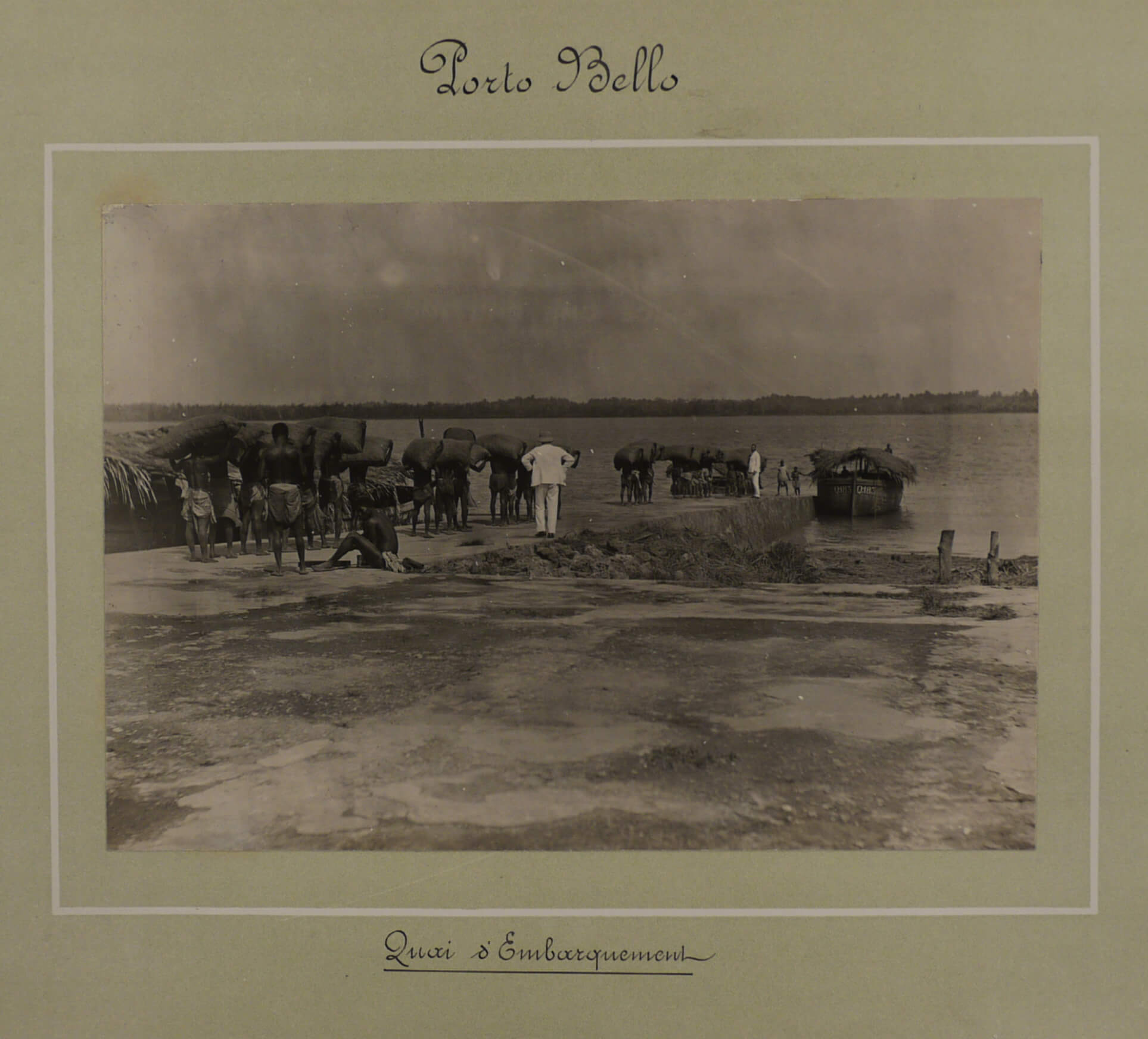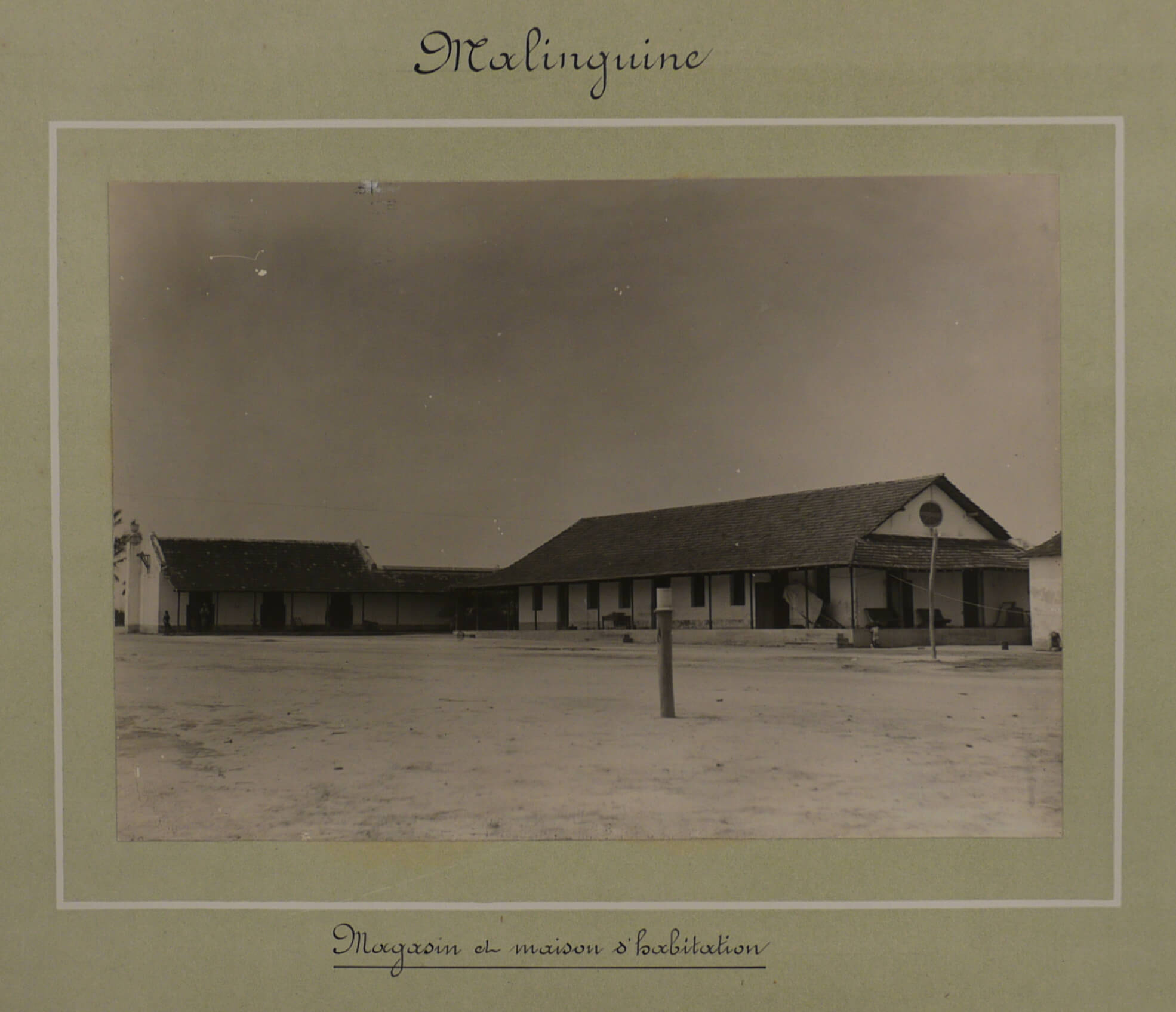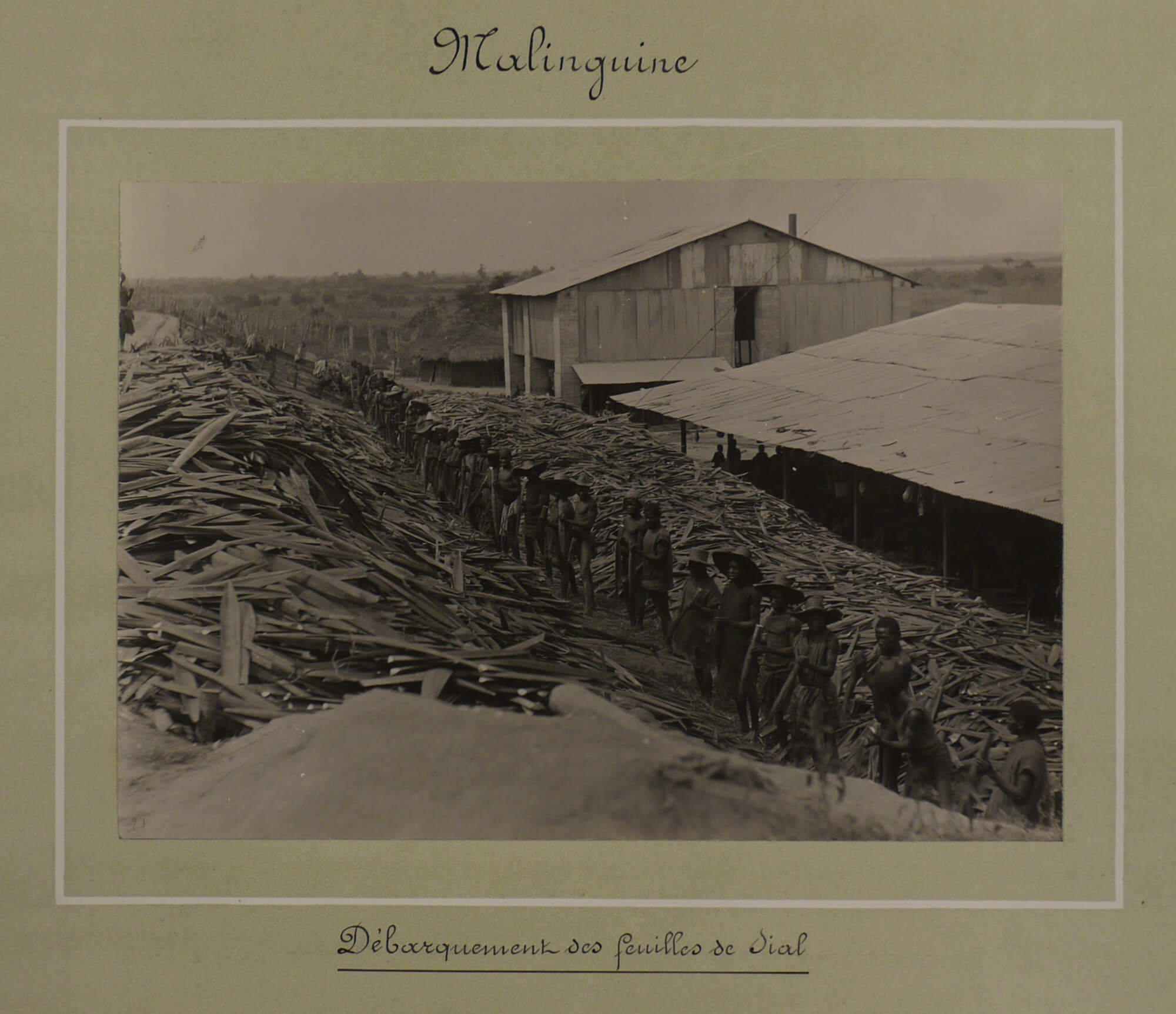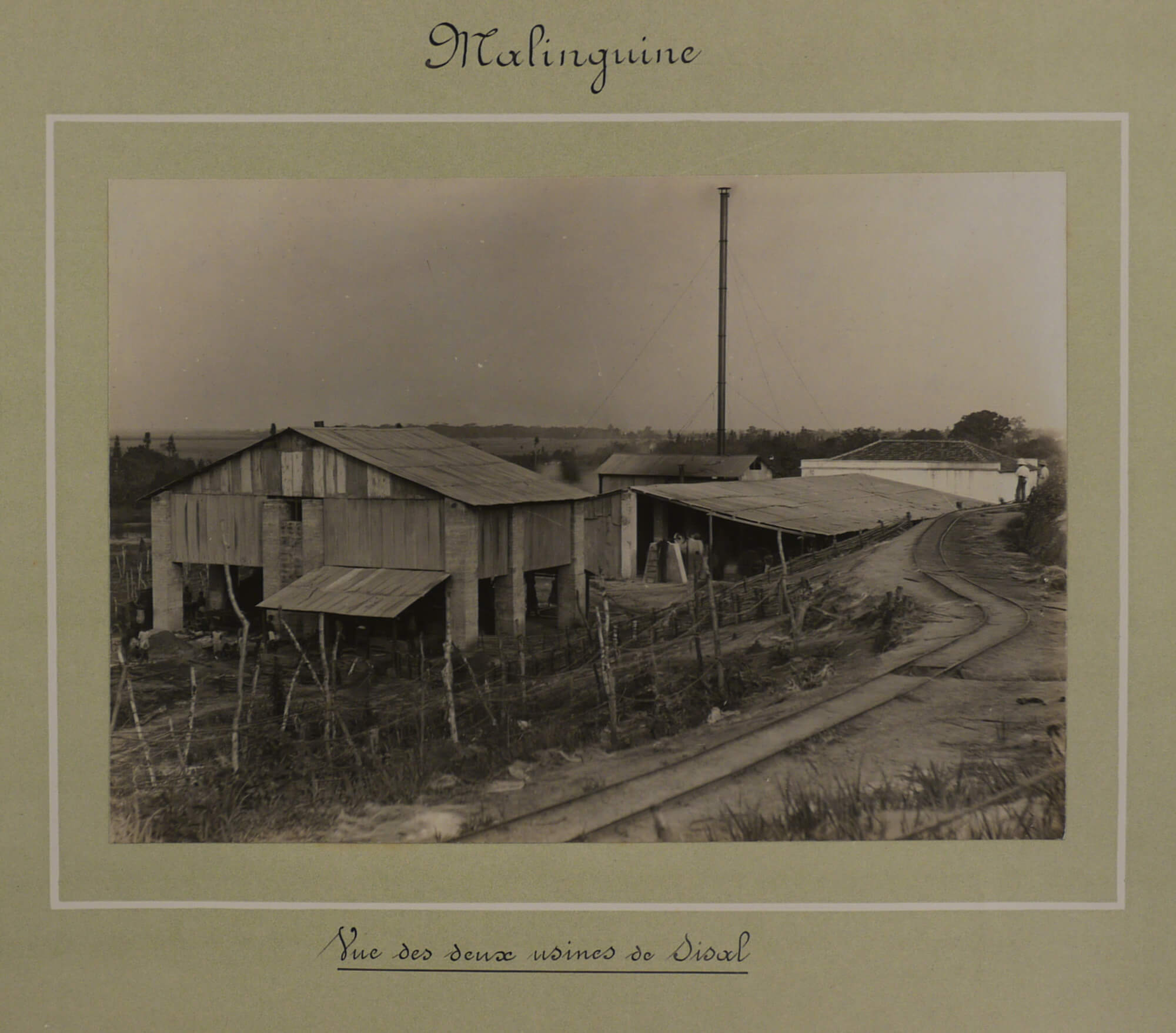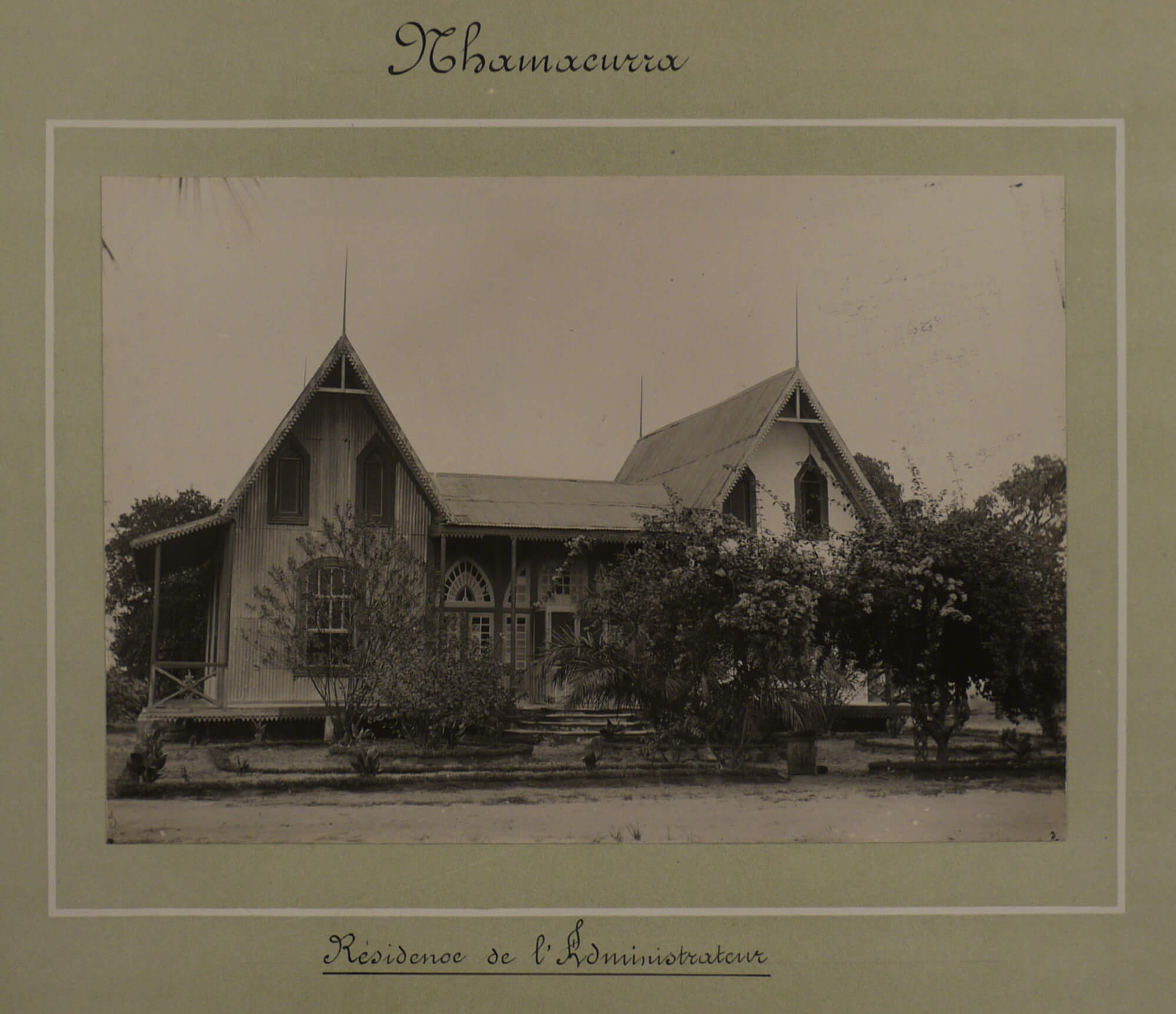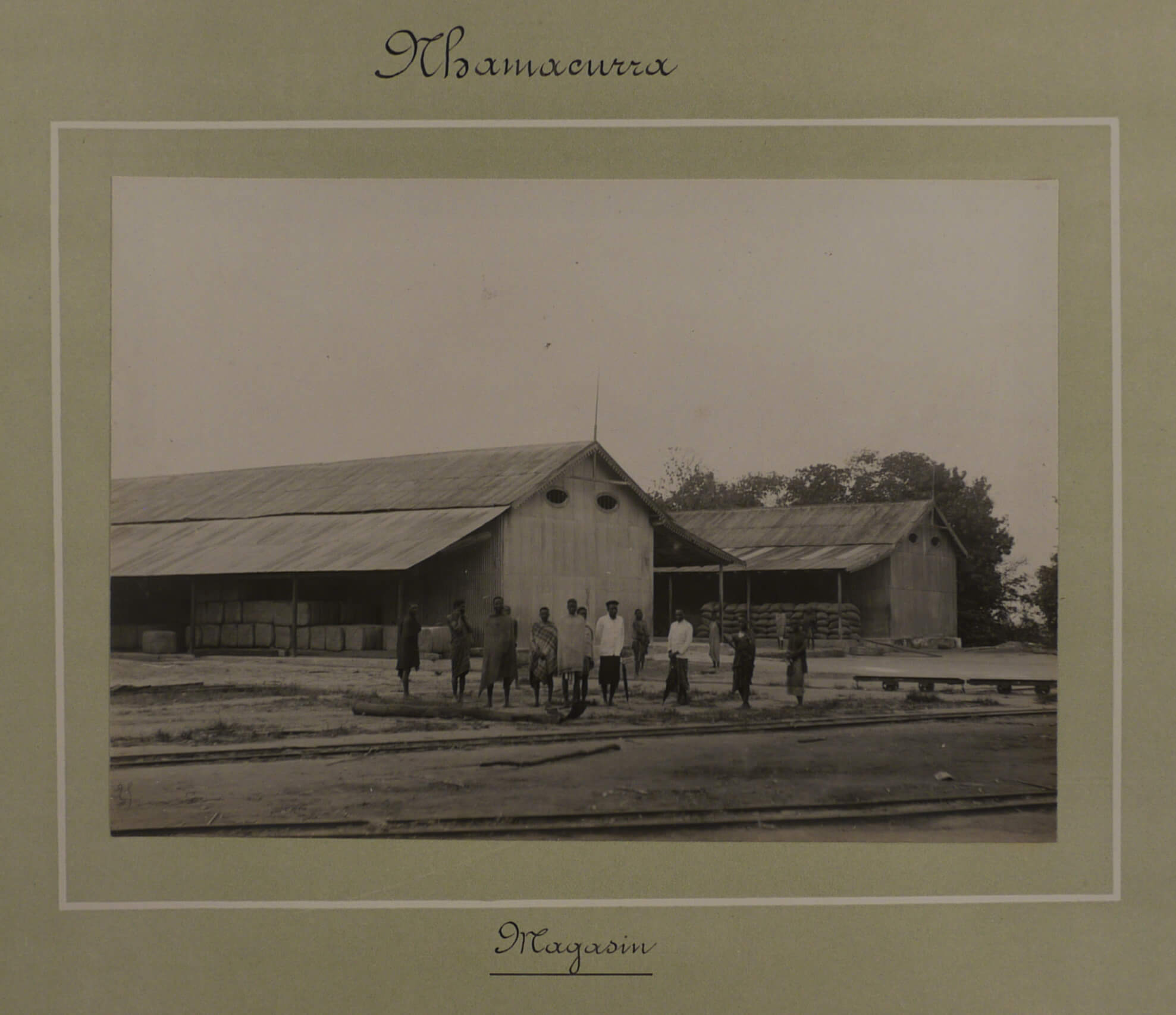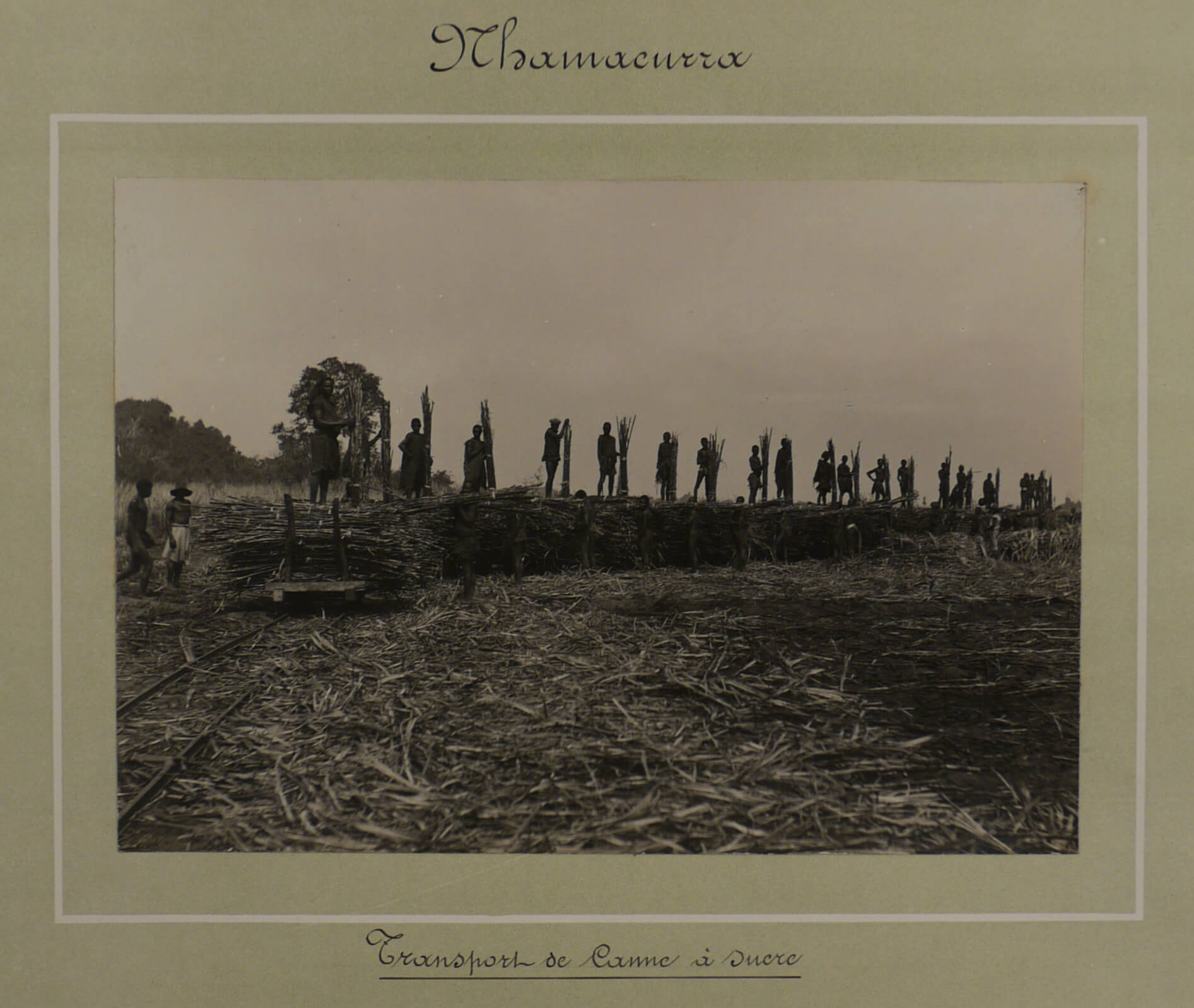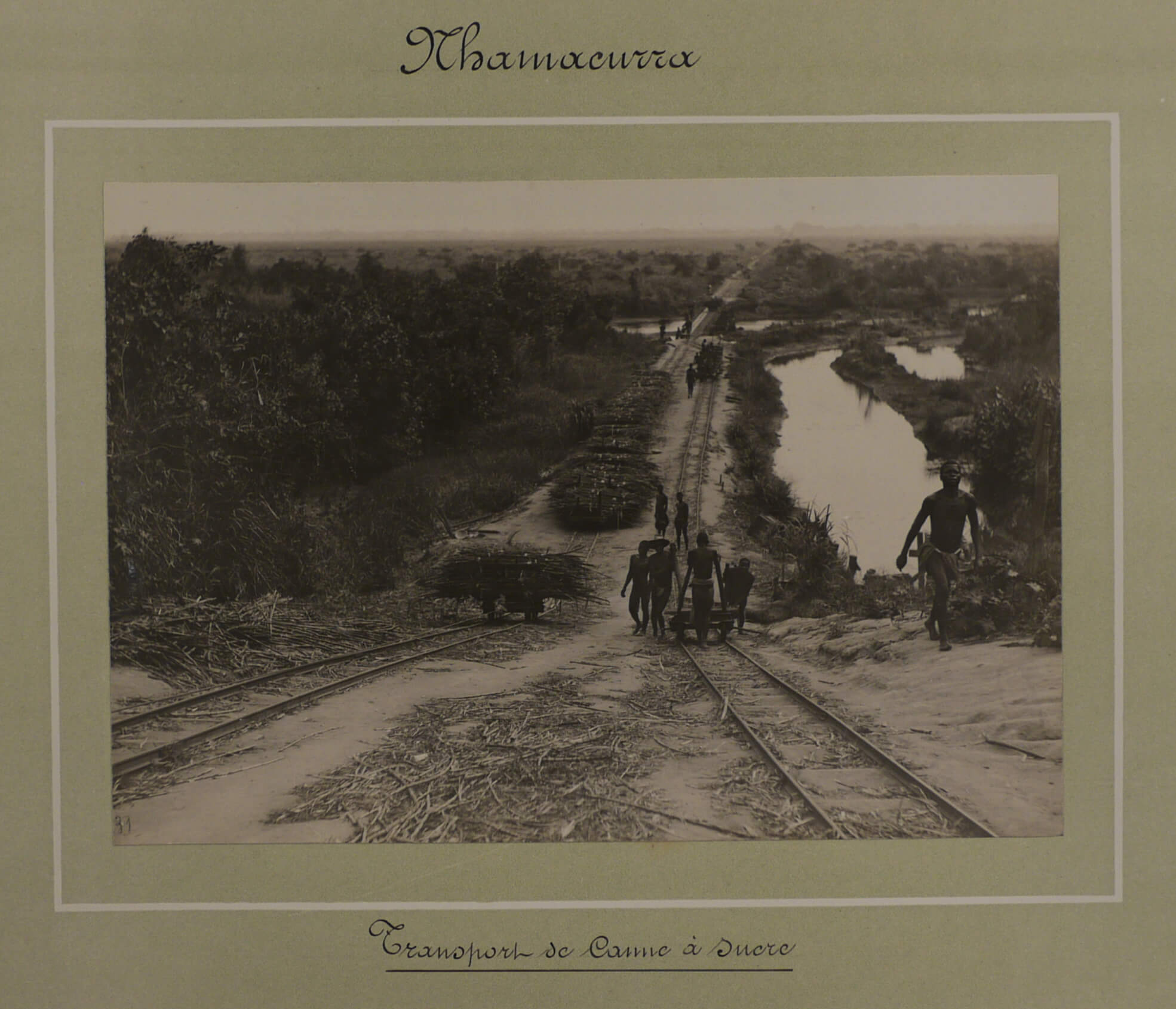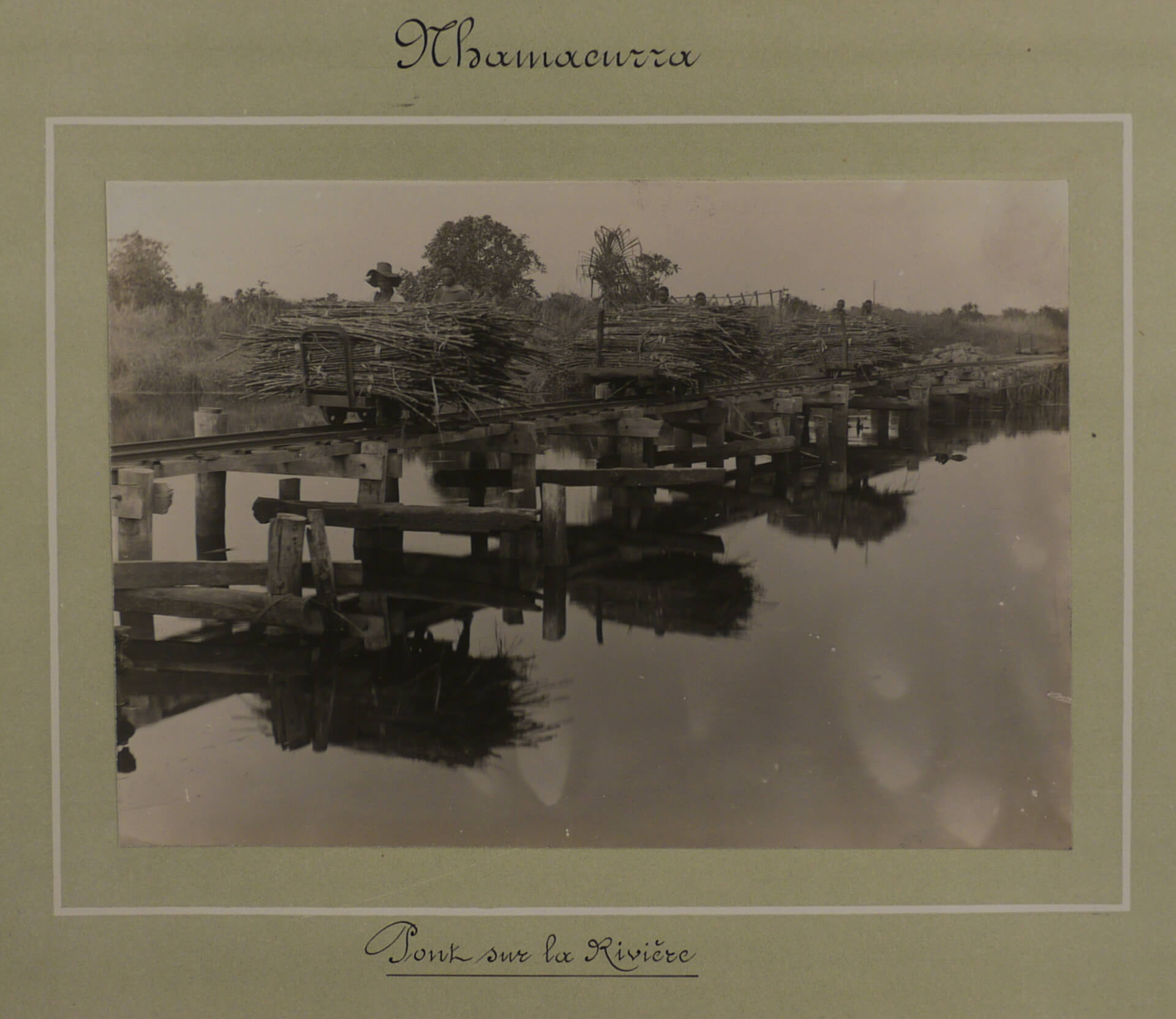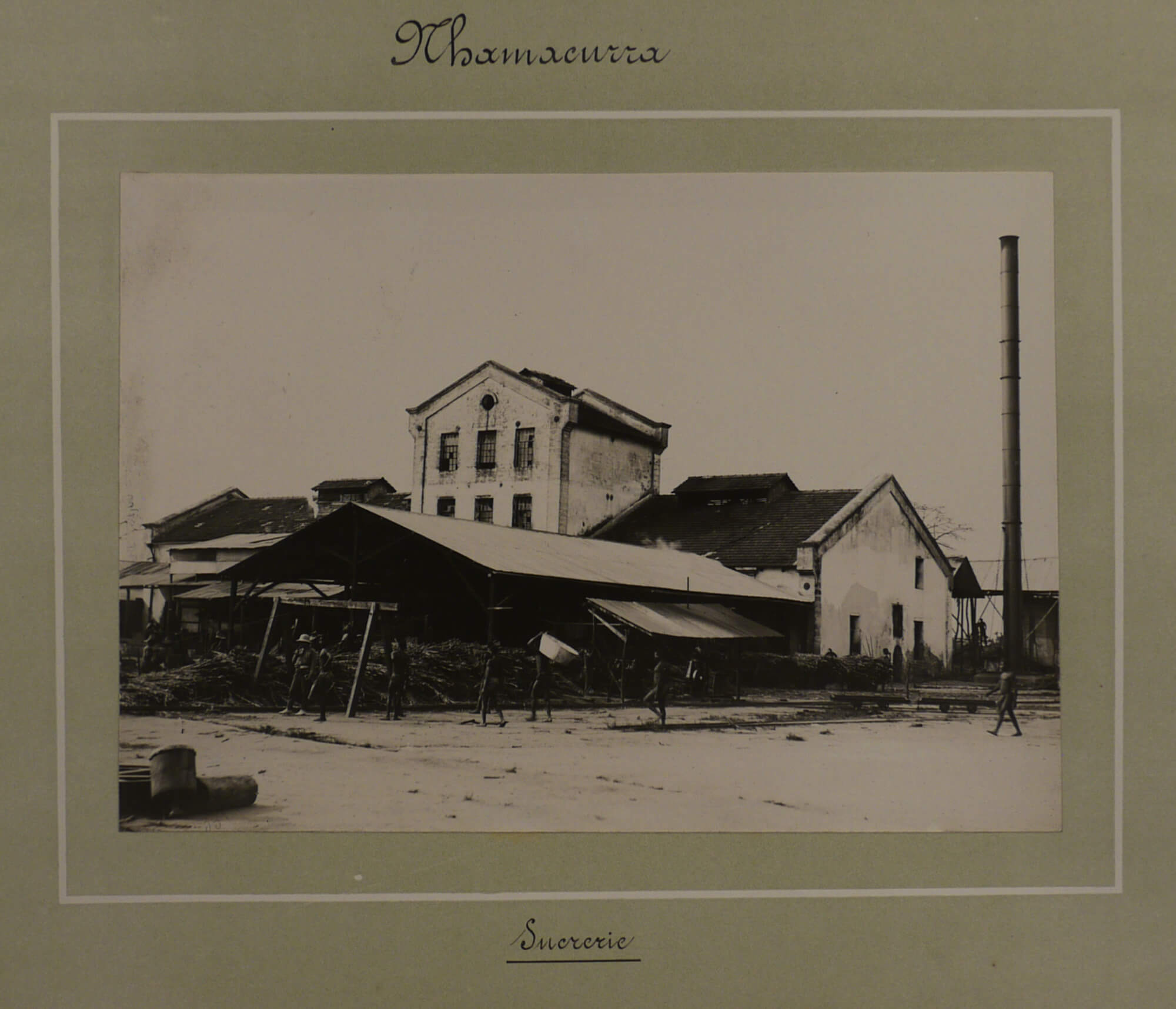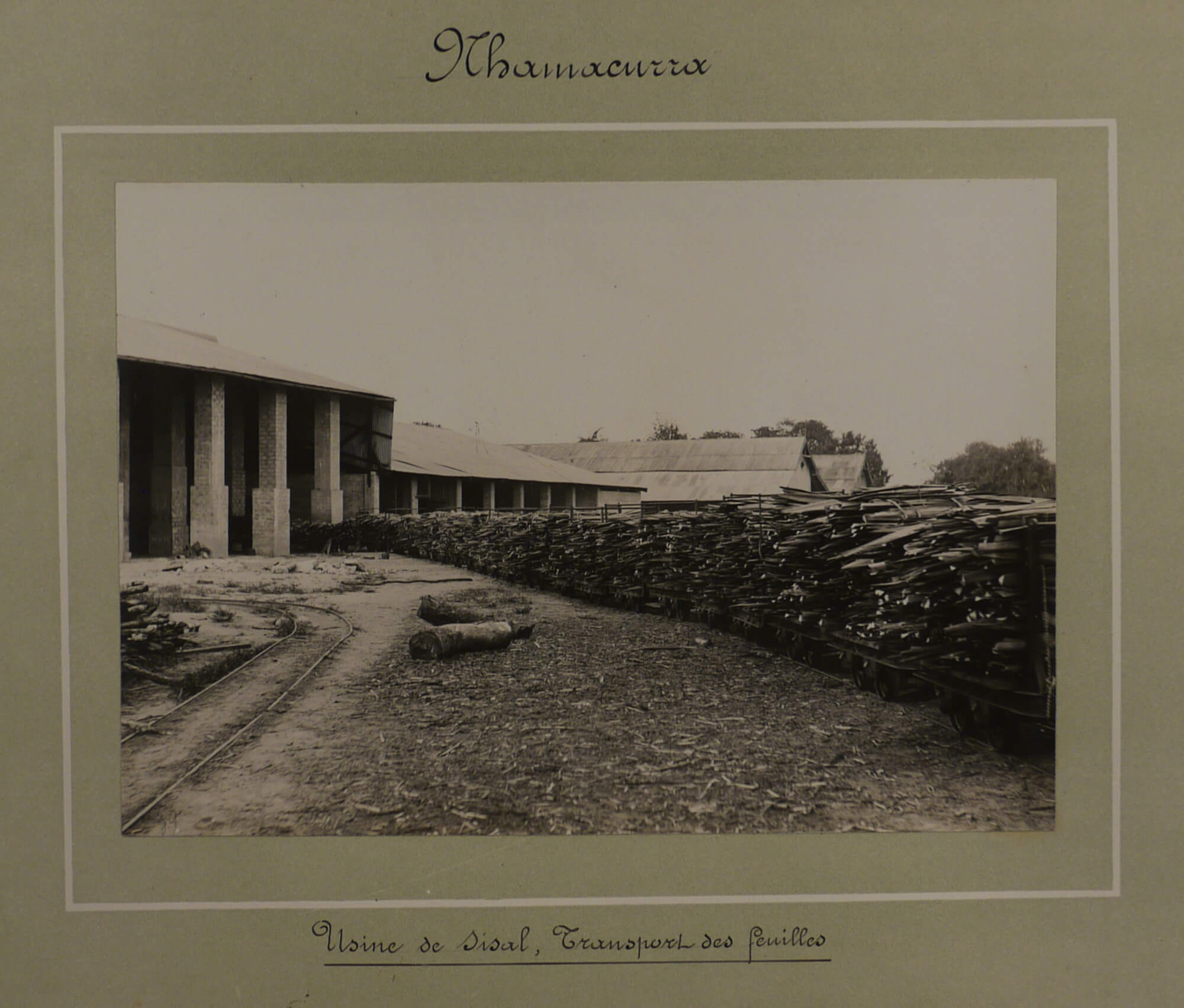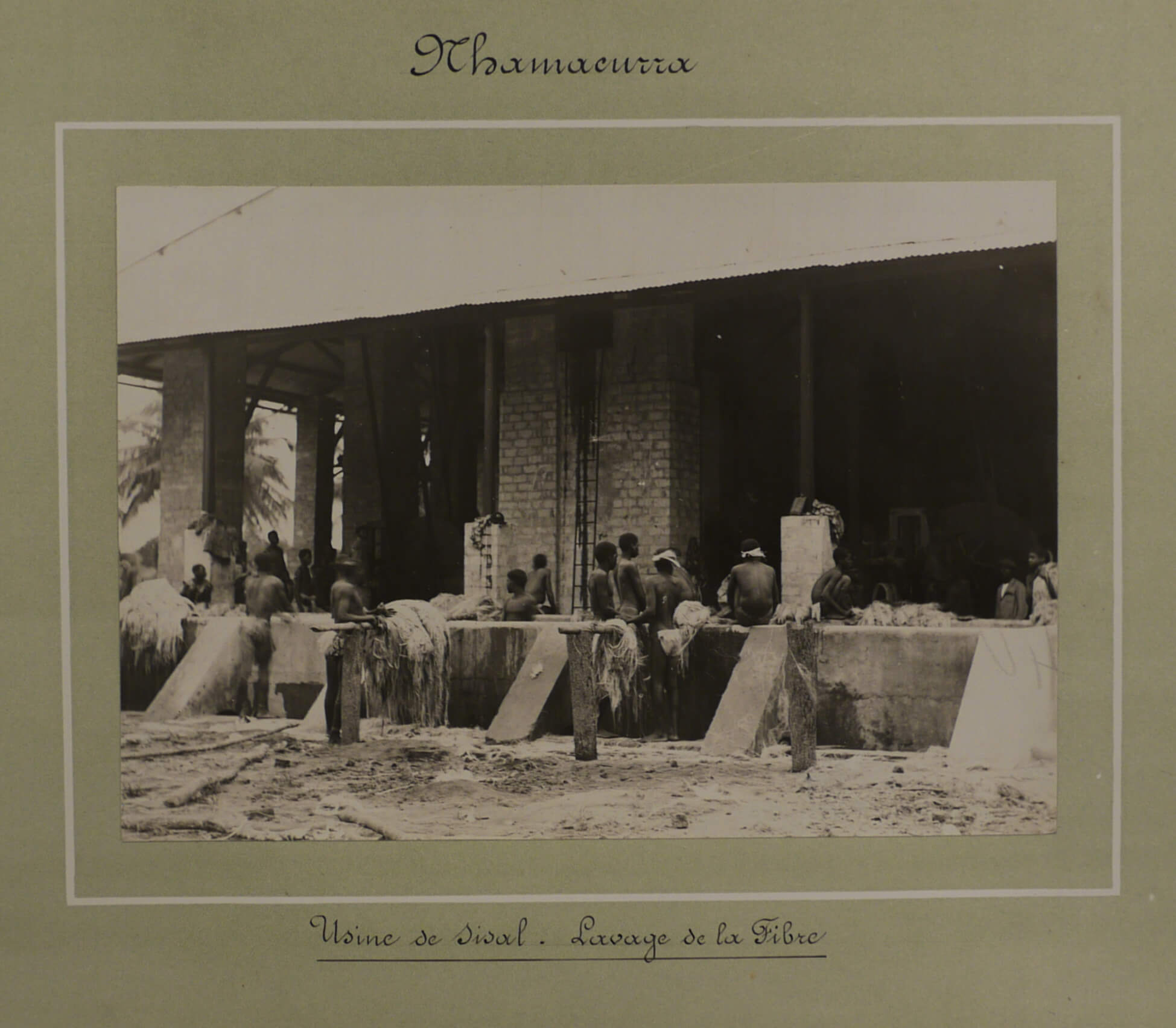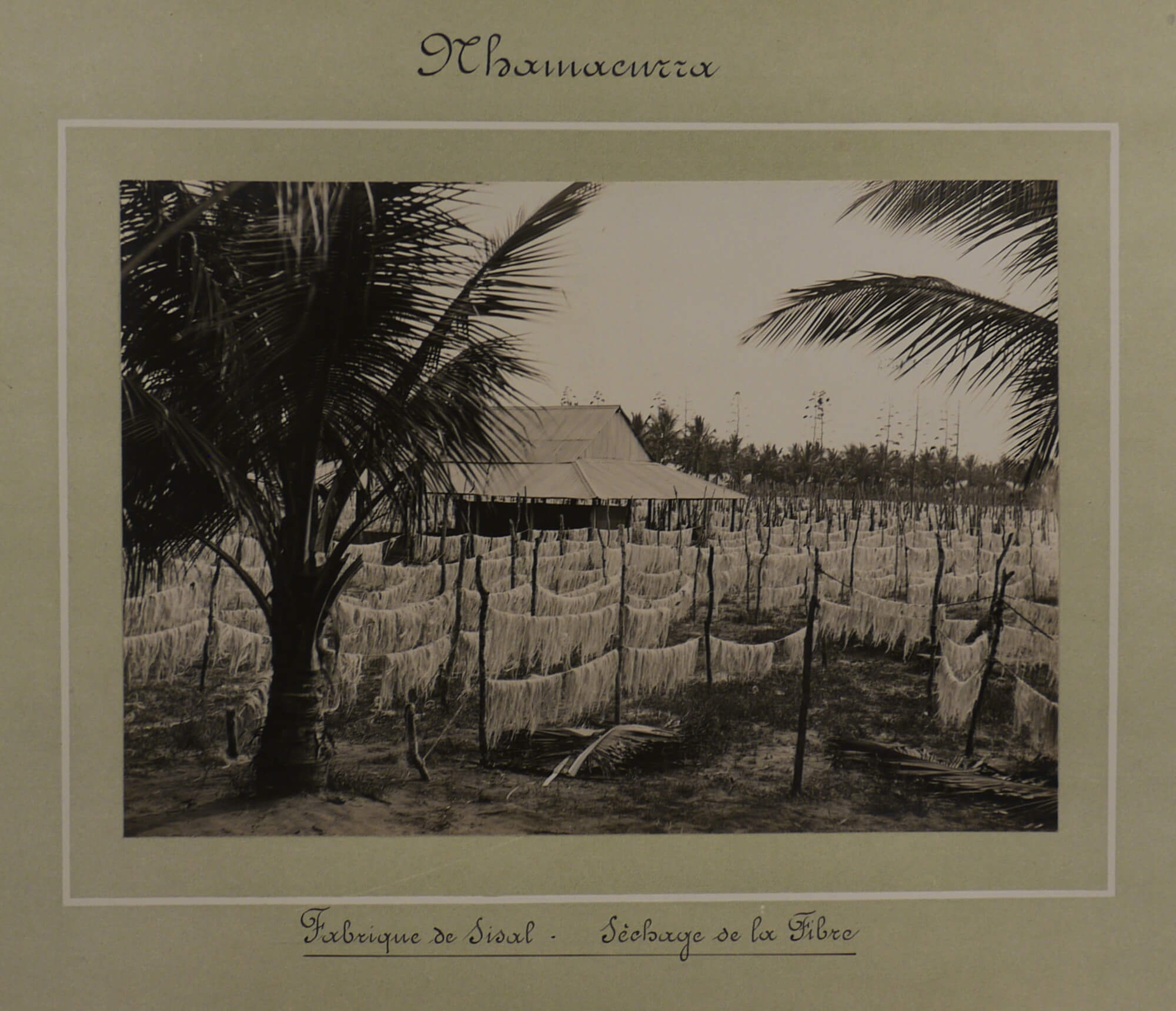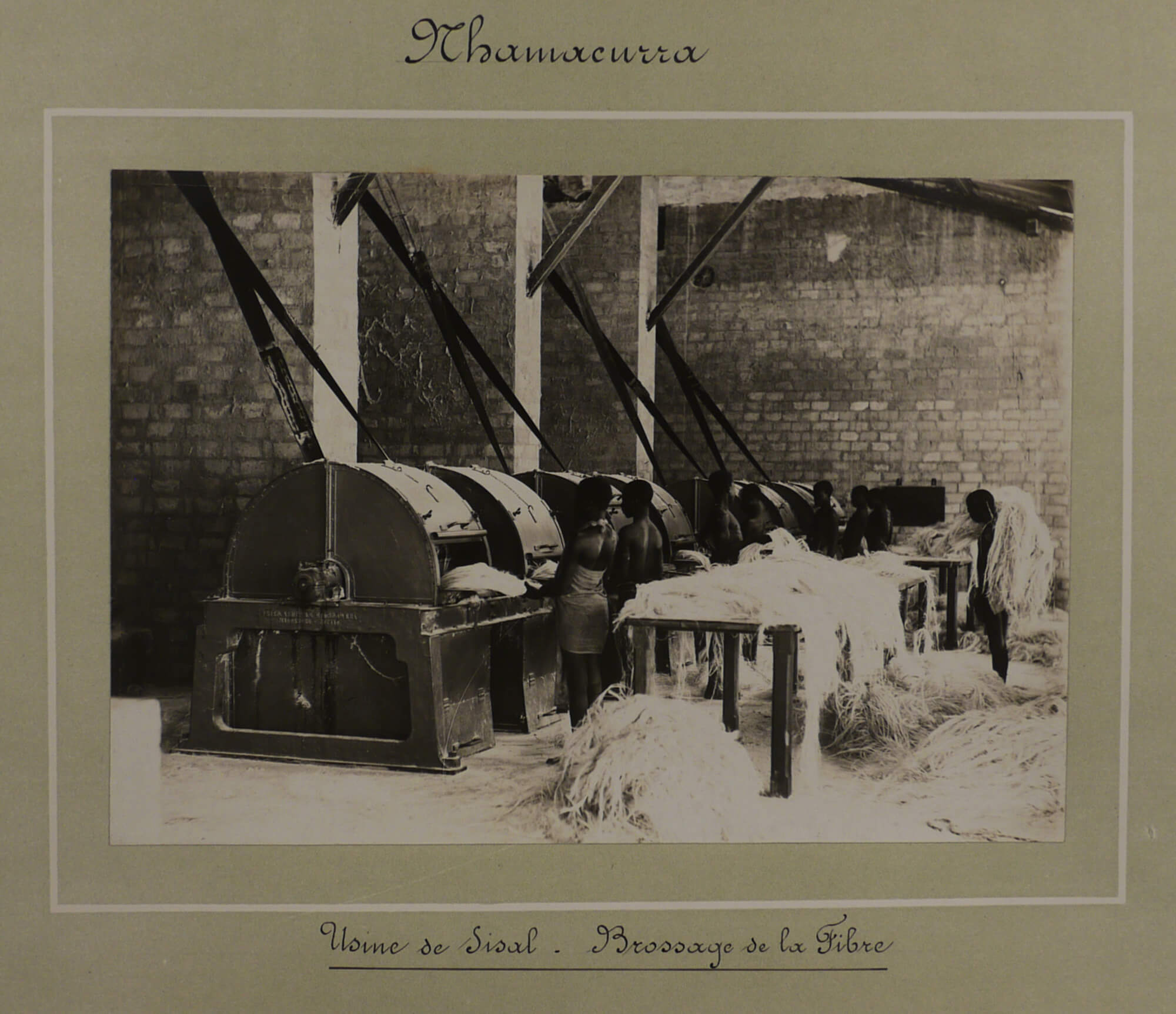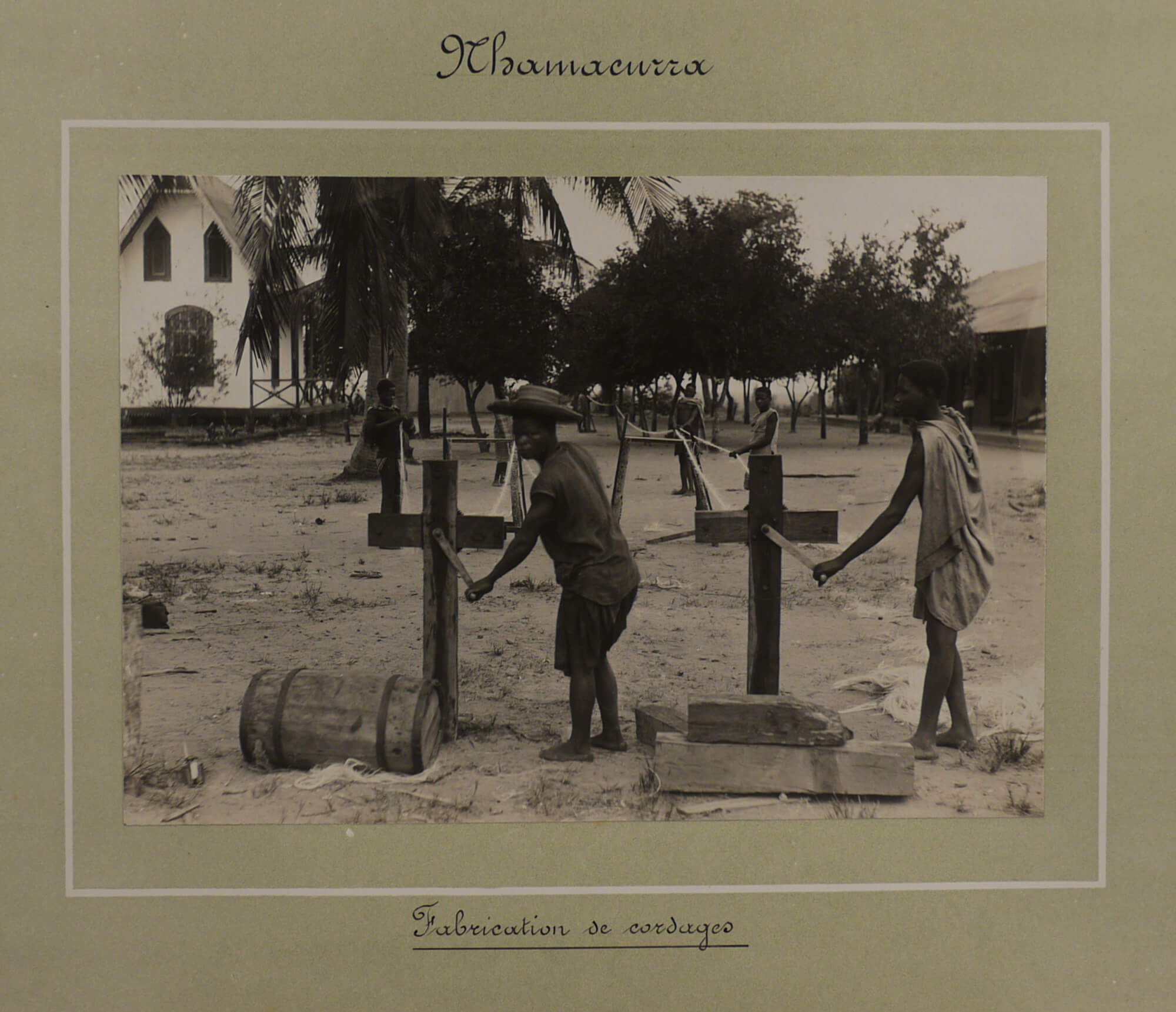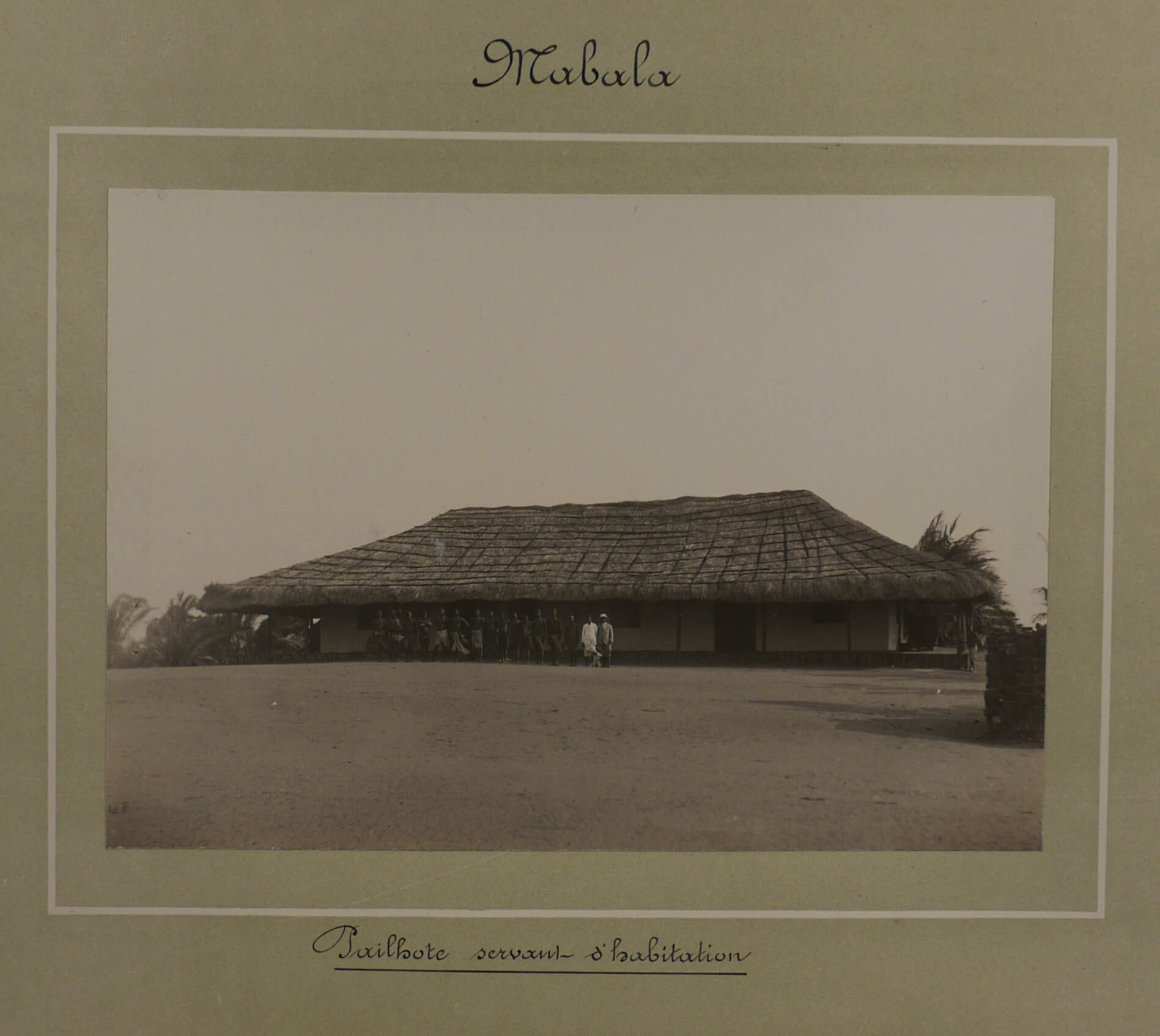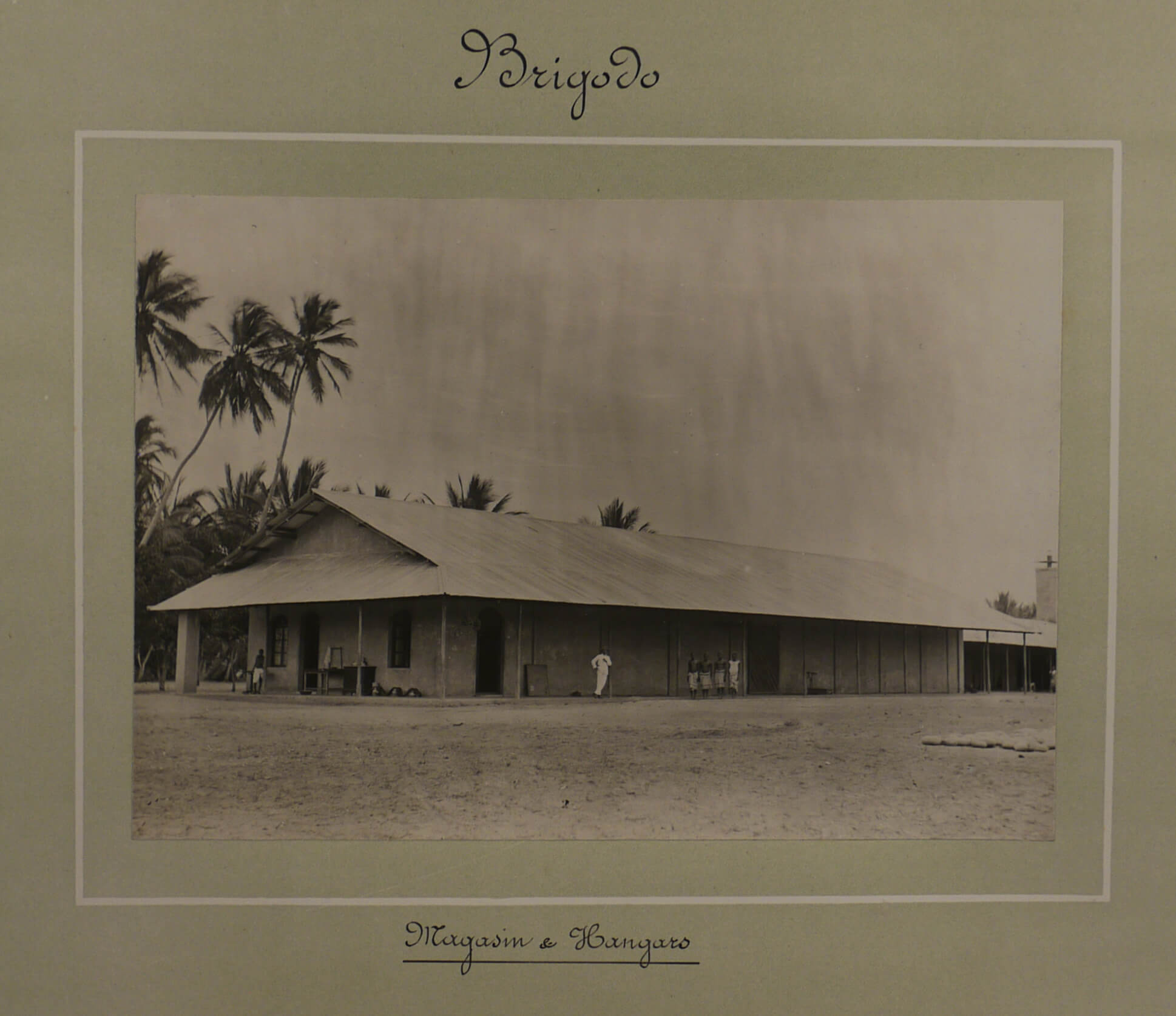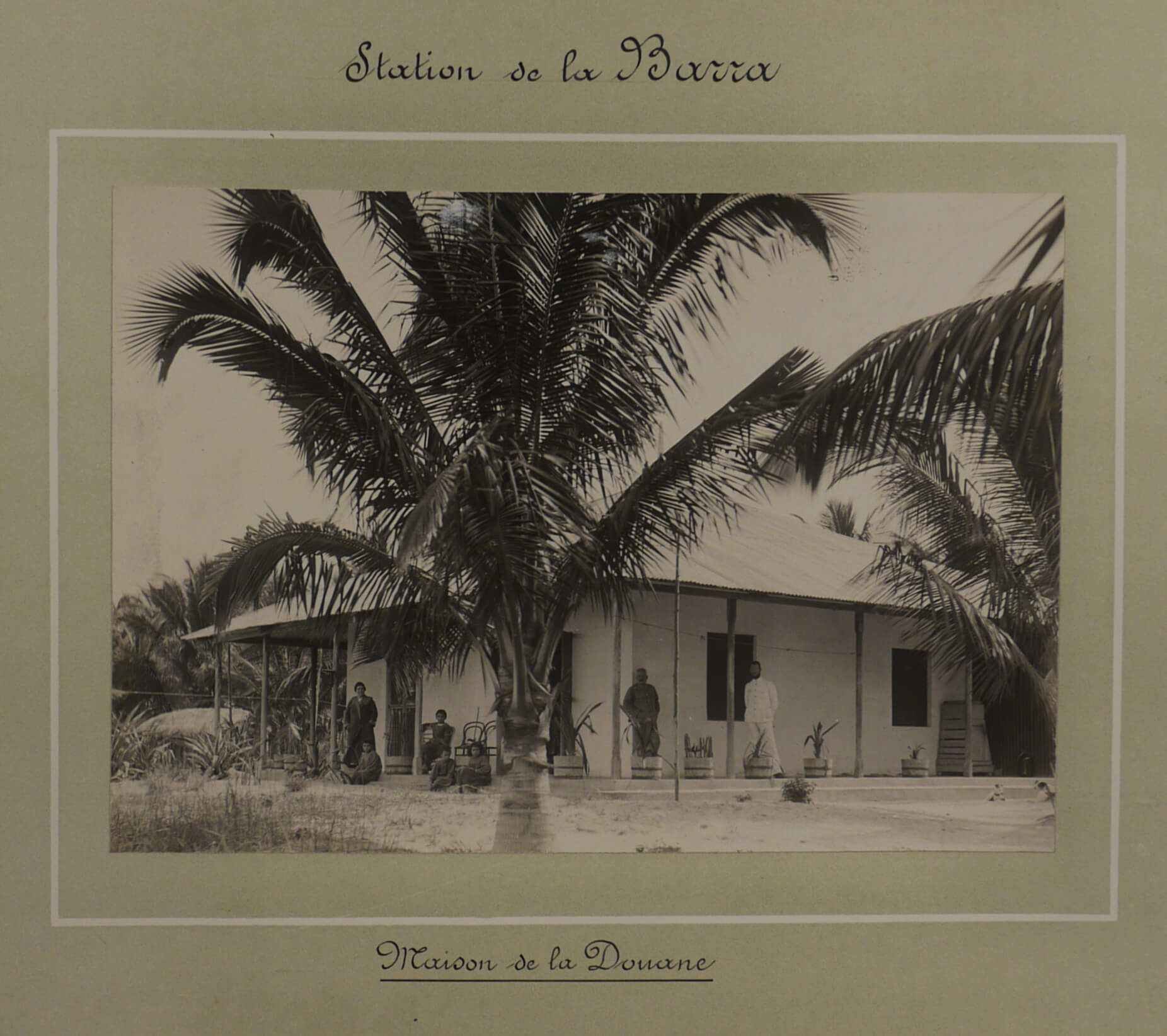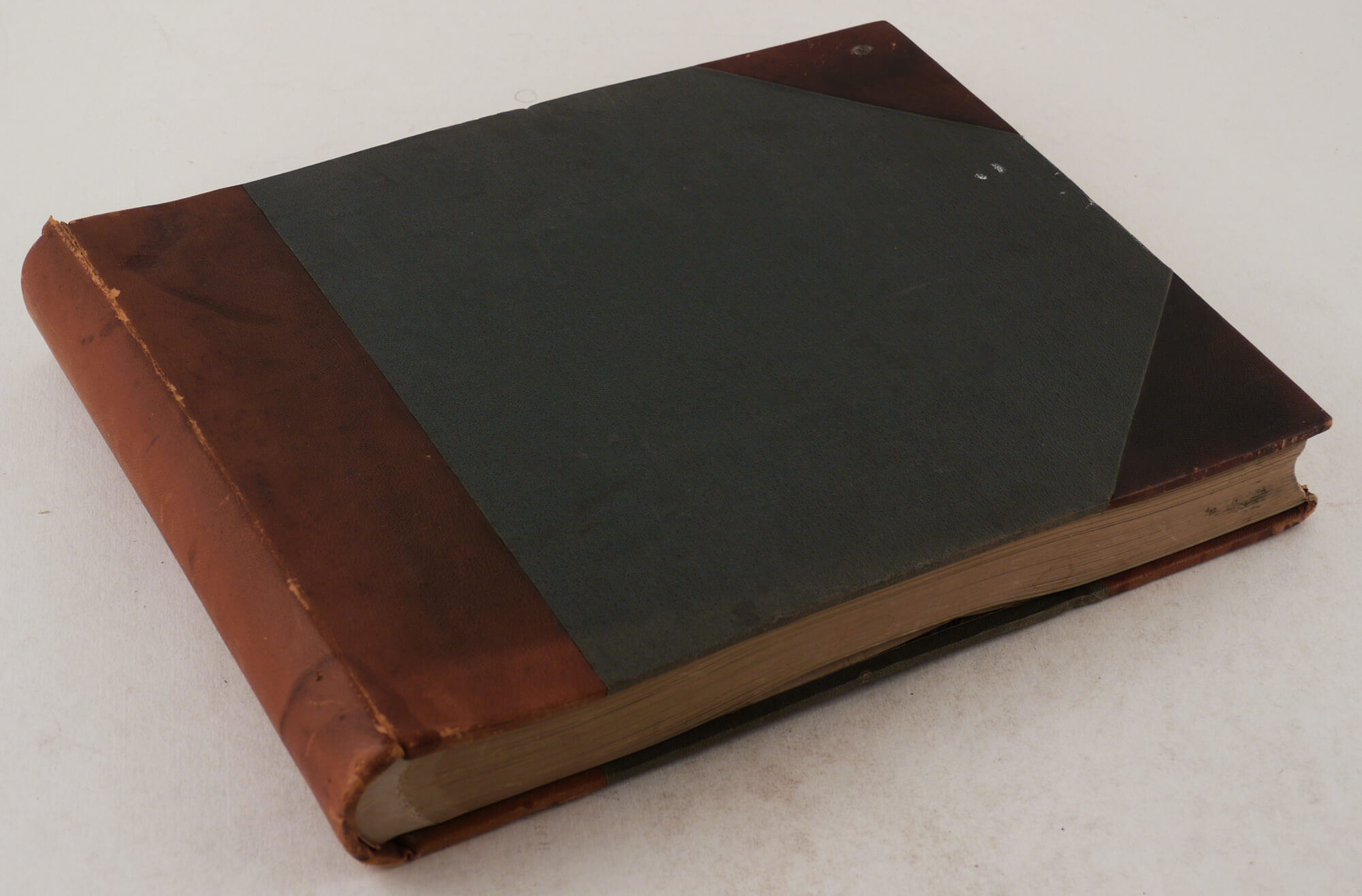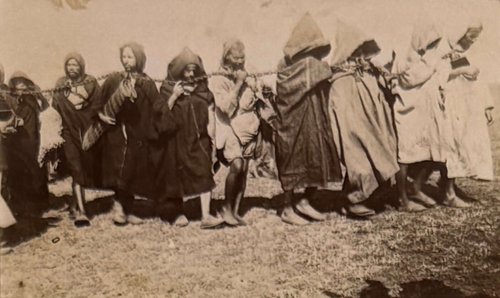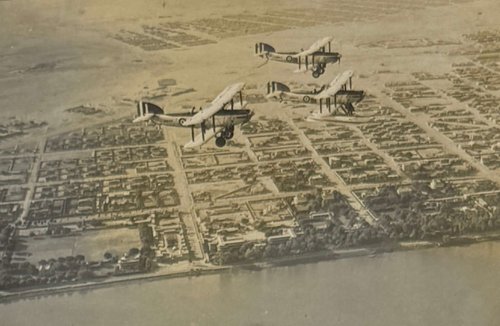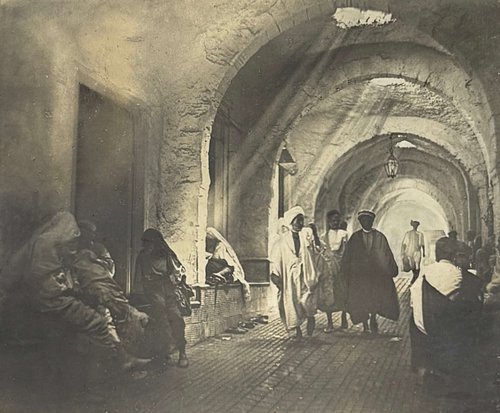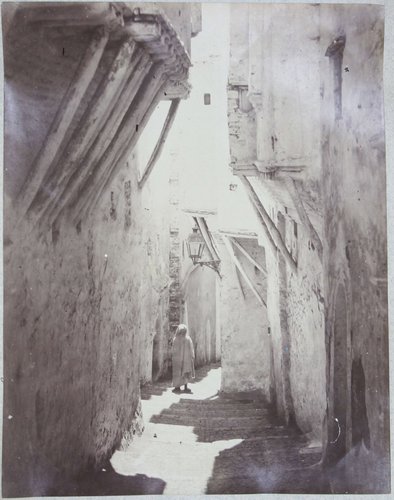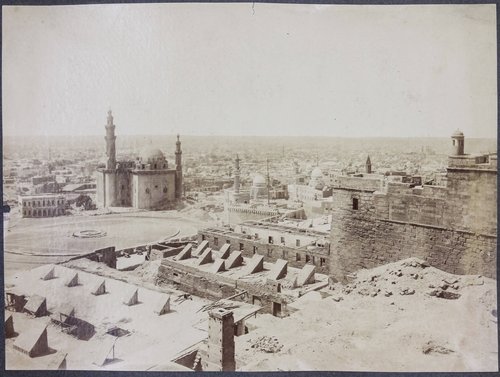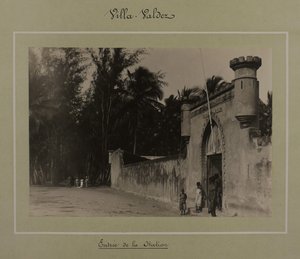
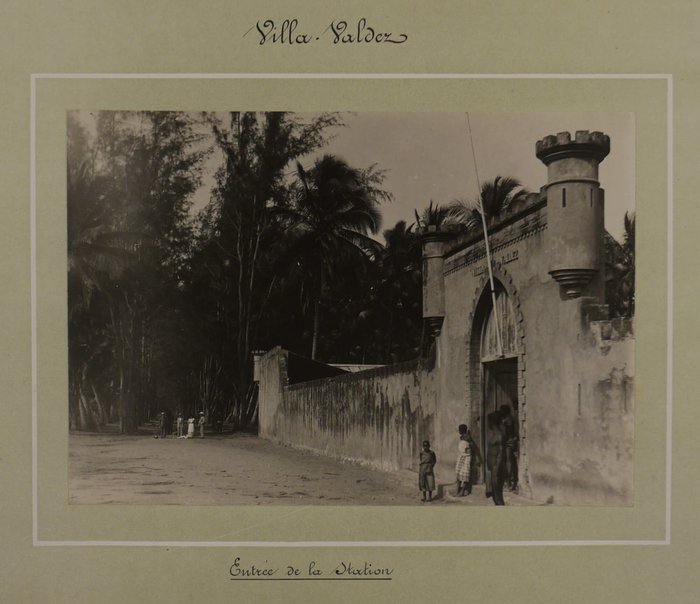
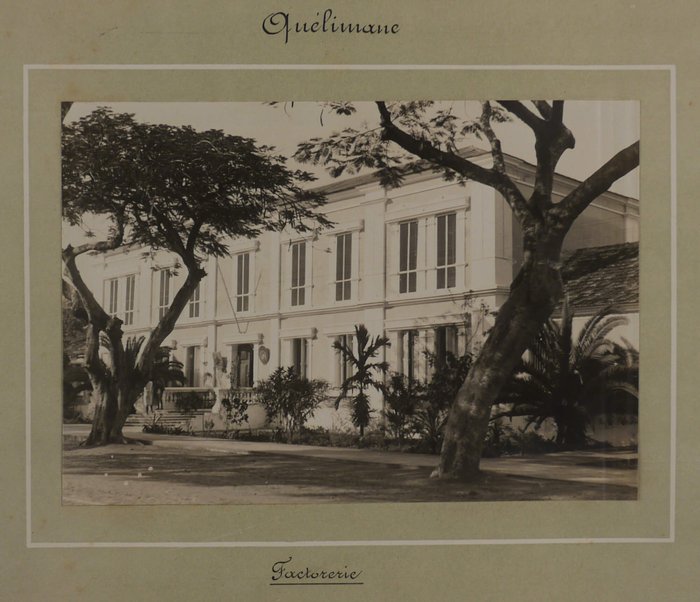
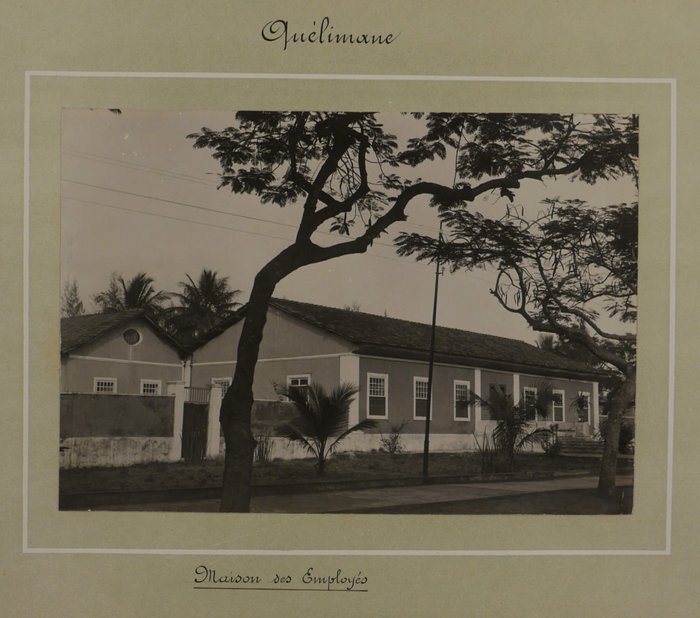
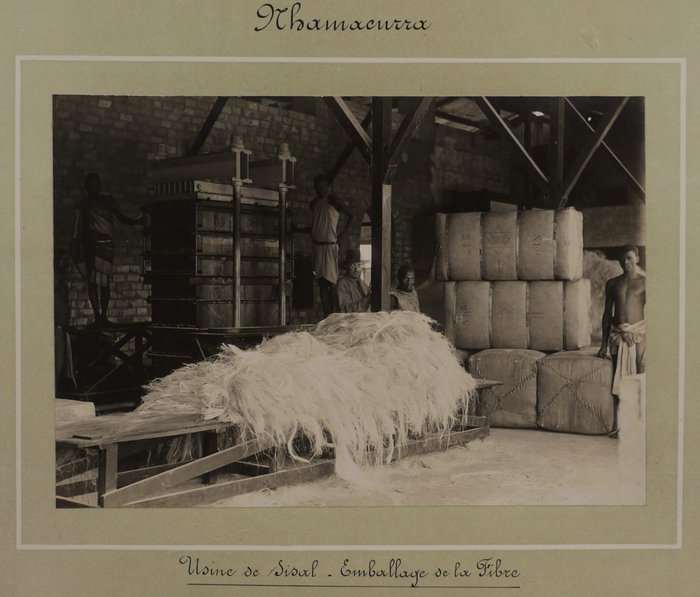
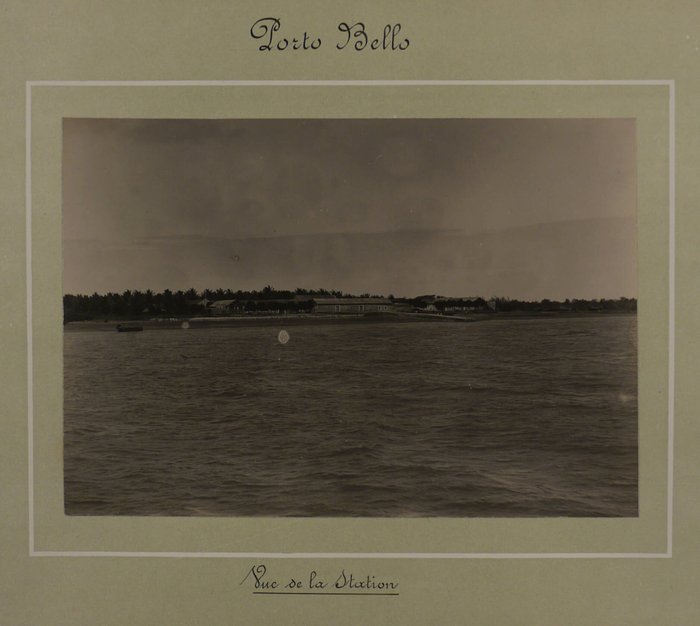
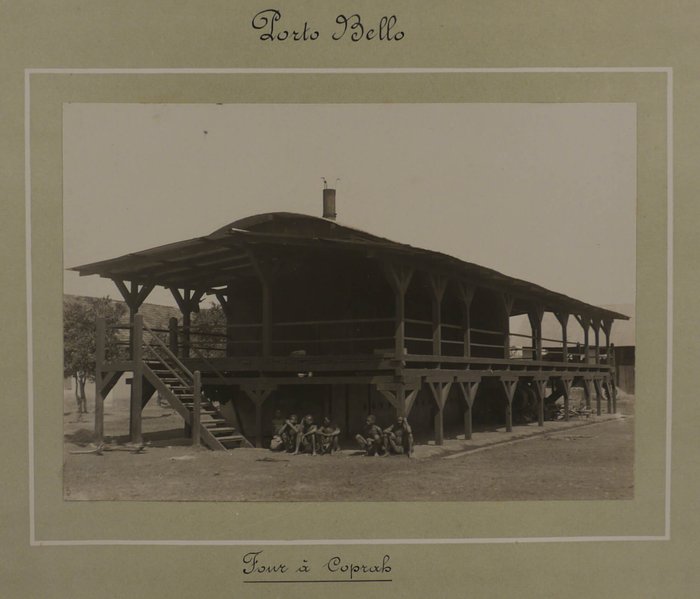
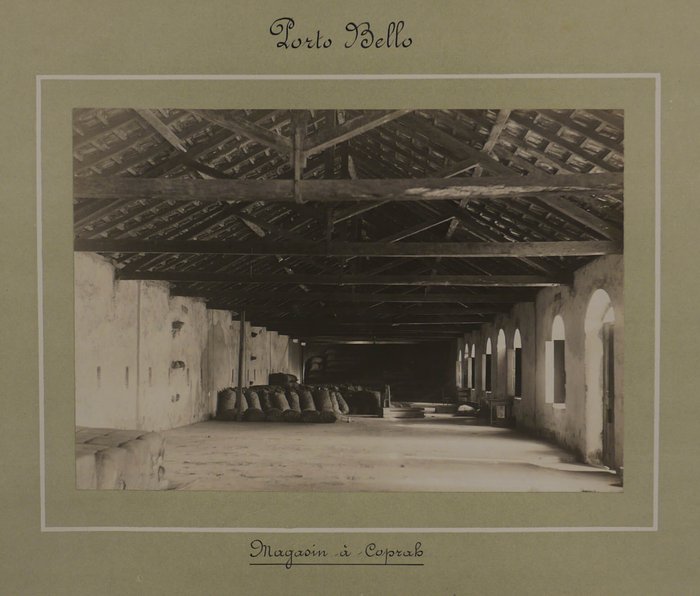
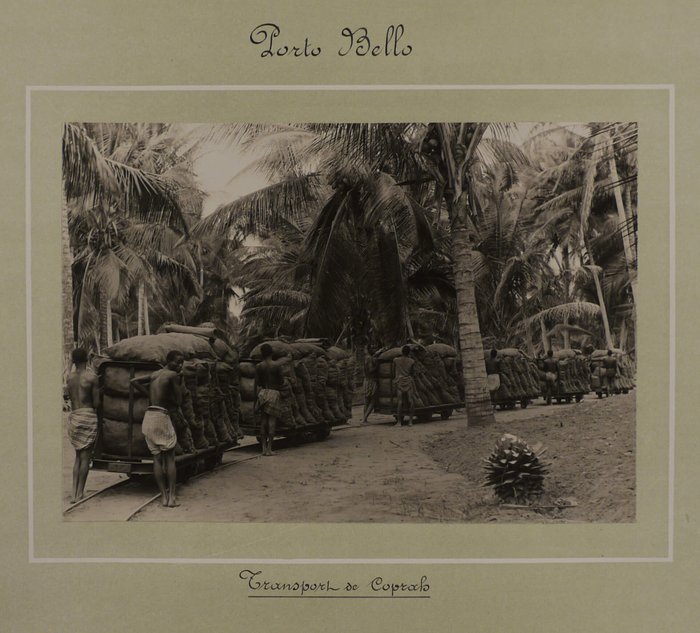
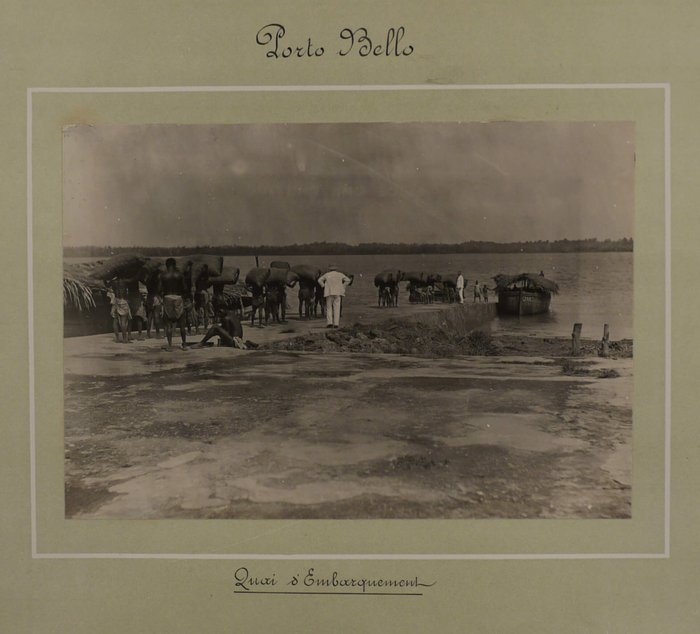
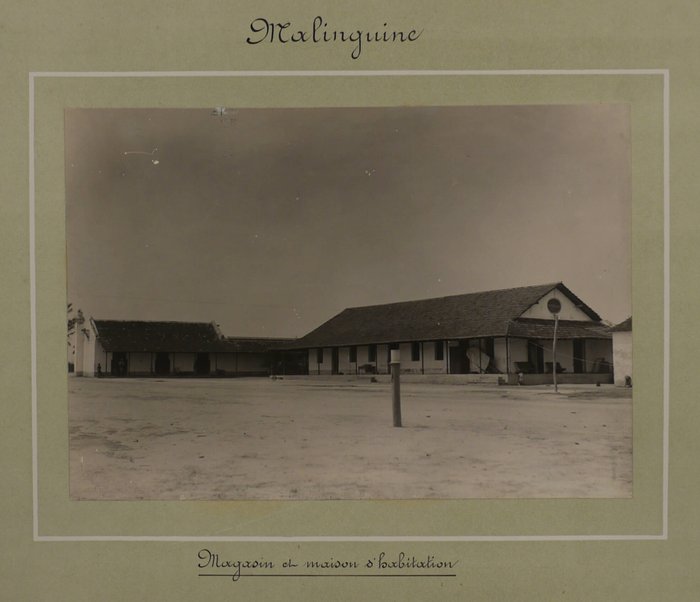
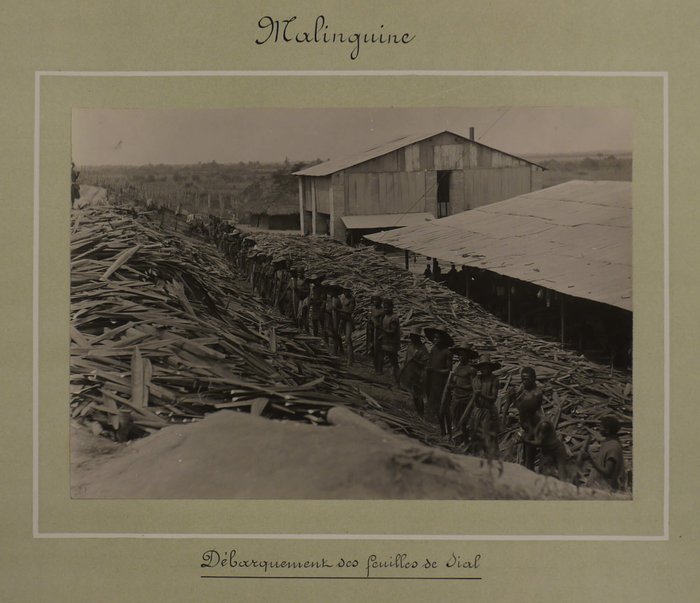
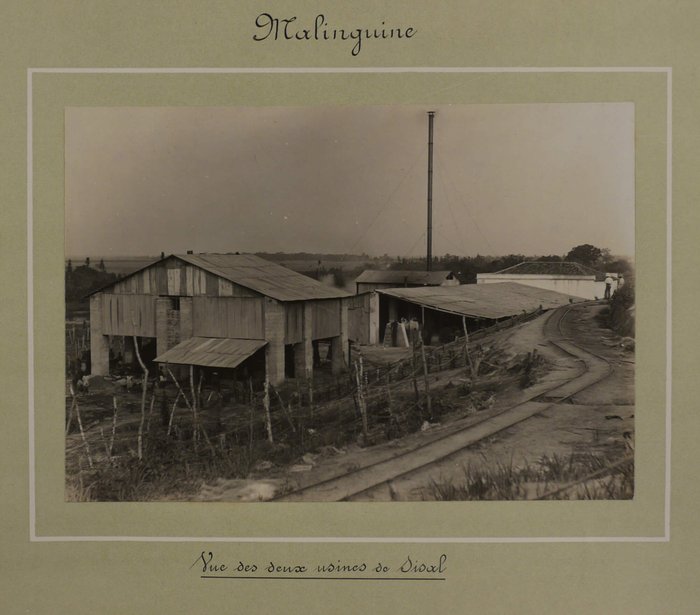

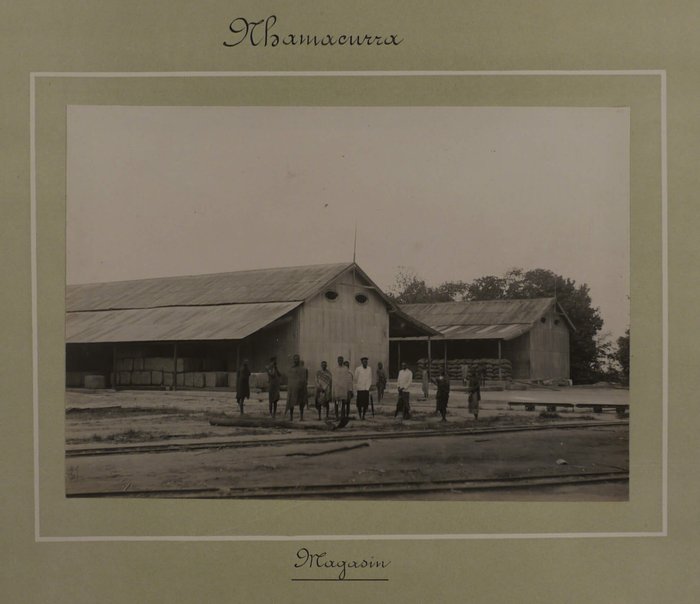
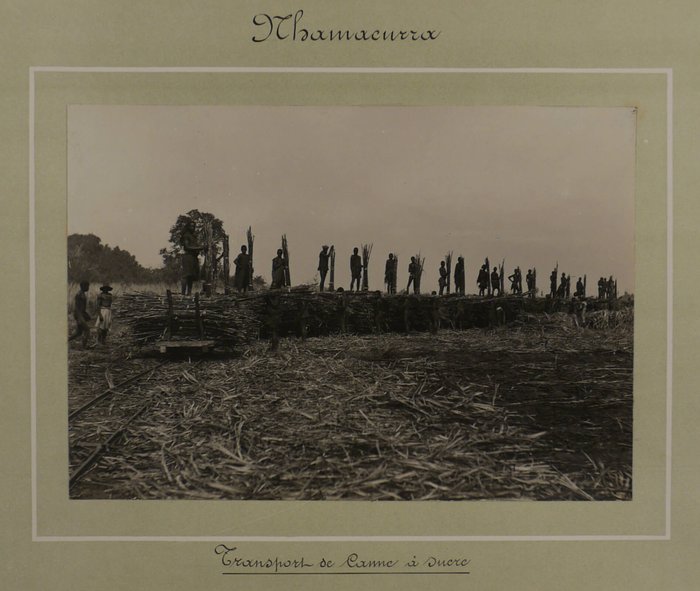
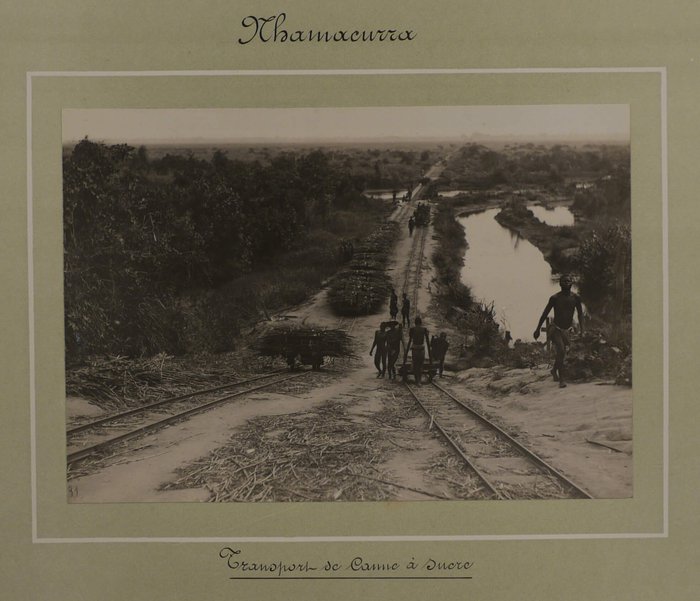
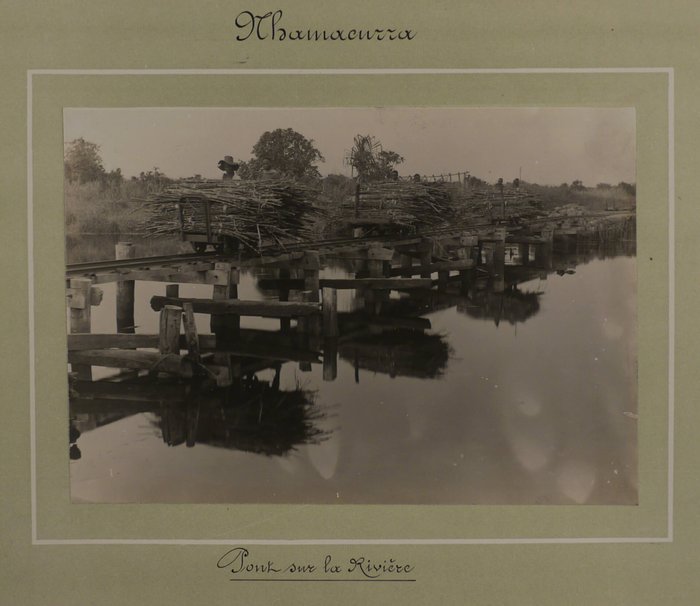
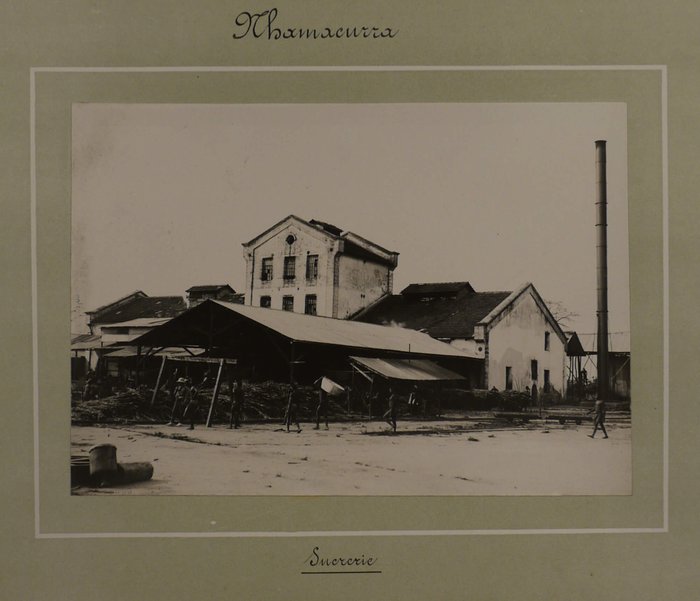

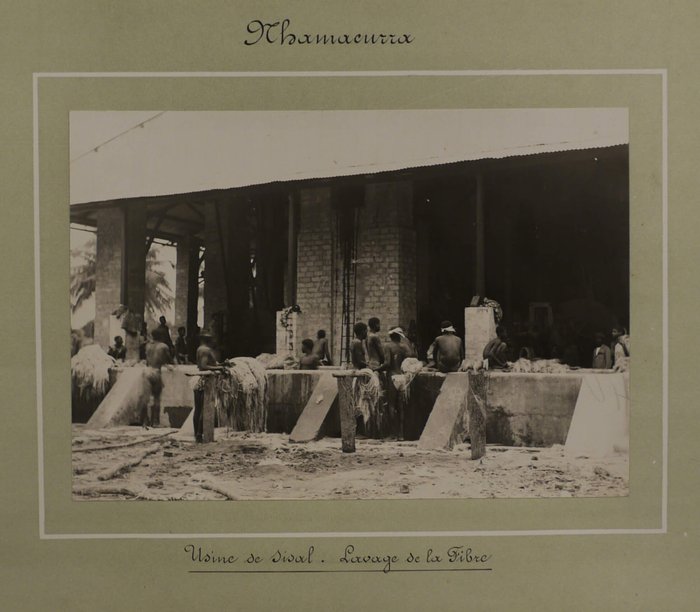
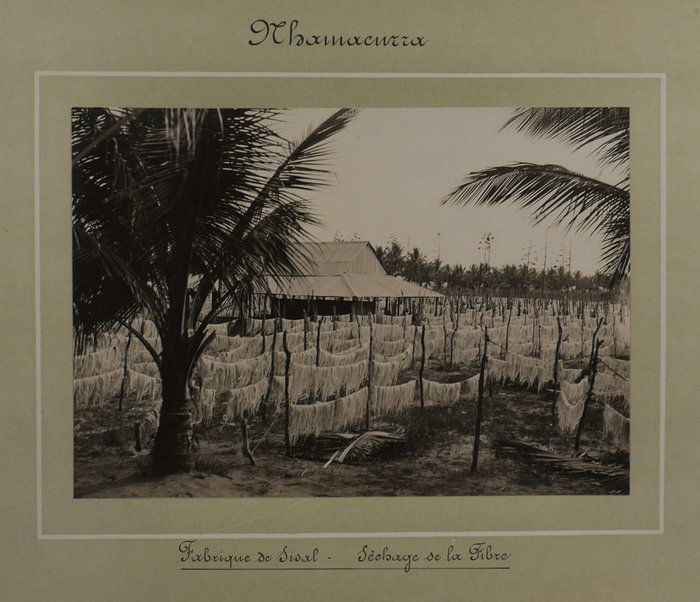
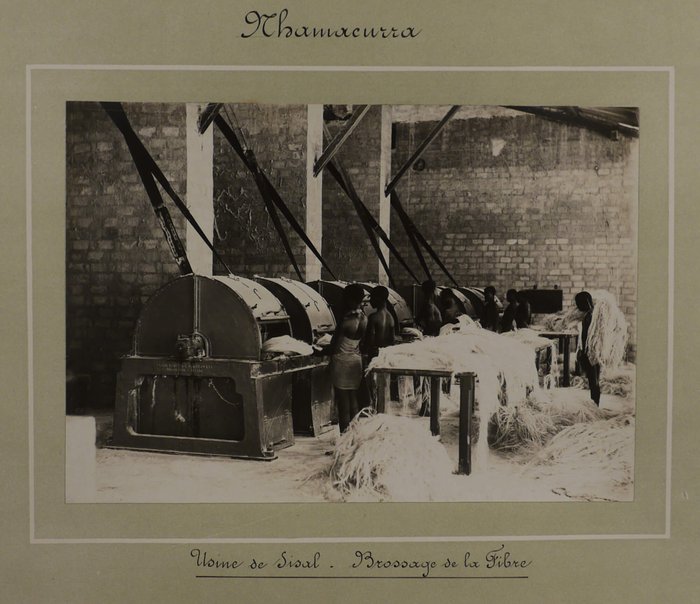
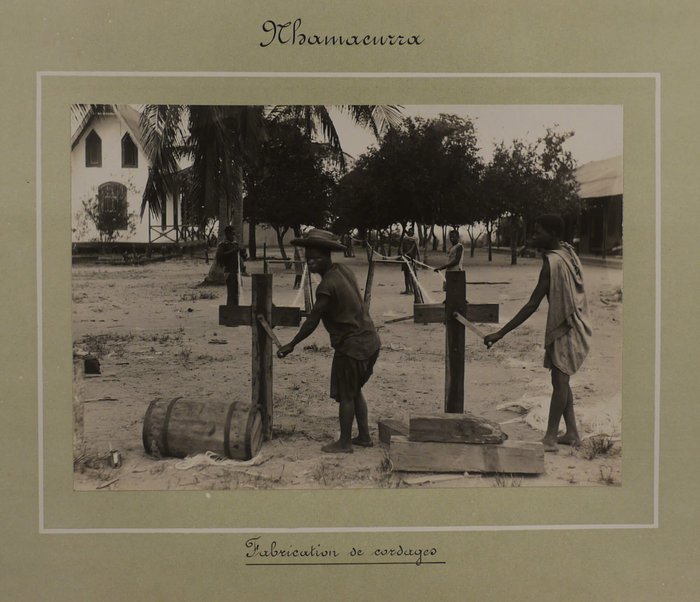
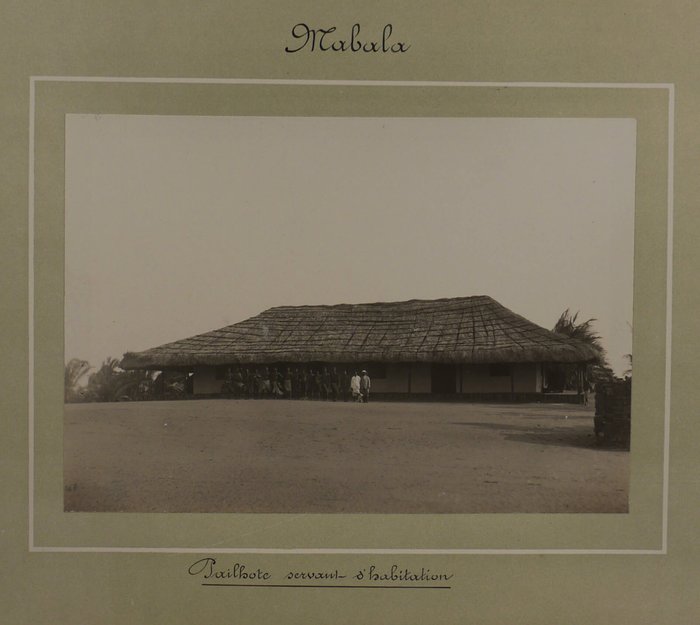
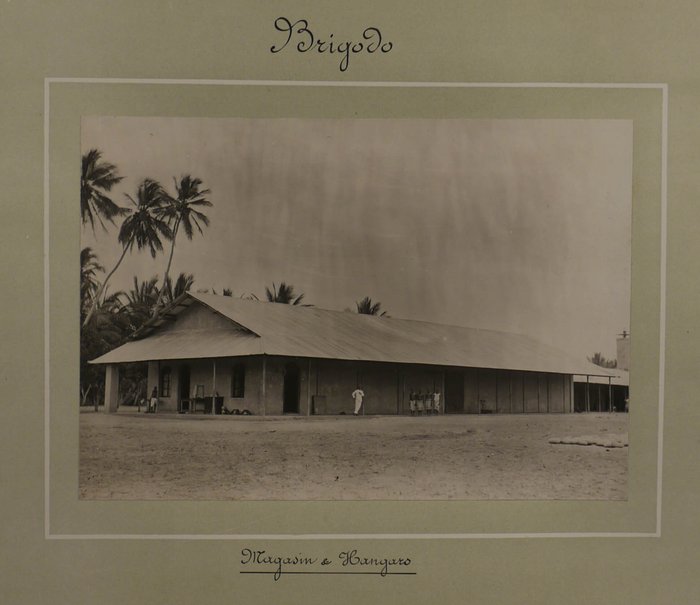
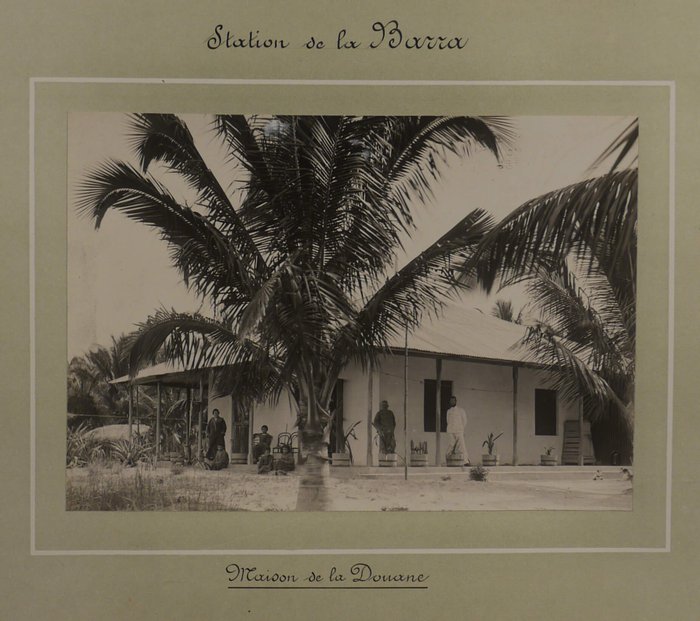
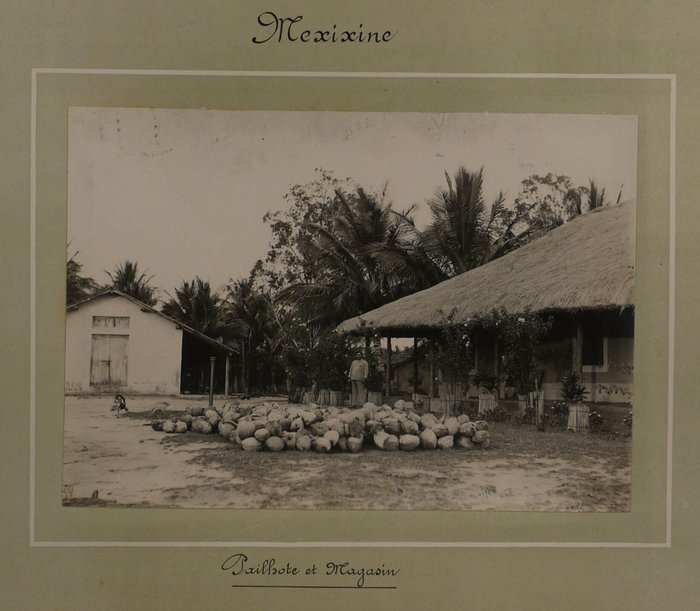
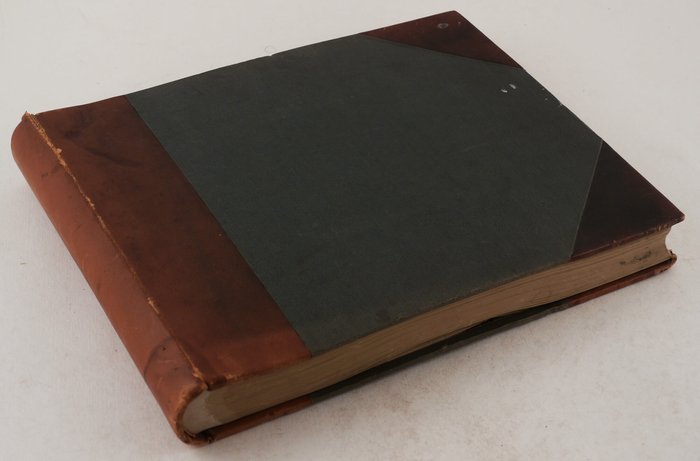
#P81
Ca. 1920s
Oblong Folio (ca. 29x36 cm). 60 light-green card stock leaves. With 60 mounted original gelatin silver photographs, each ca. 13,5x19,5 cm (5 ½ x 7 ¾ in). All photos with period calligraphic ink captions in French on the mounts. Period brown half morocco with green pebbled cloth boards; marbled endpapers. Spine with a minor tear at the top of the front hinge, binding slightly rubbed on extremities, corners slightly bumped, but overall a very good album of strong interesting images.
Historically interesting album illustrating the activities of one of the largest agricultural companies in colonial Mozambique – Companhia do Boror. The company was founded in 1899 by Swiss enterpreneur Joseph Émile Stucky de Quay and specialized in growing and processing coconuts, sisal and sugar cane. The company had a concession for the lands around Quelimane in the Zambezia Province and established its headquarters in Nhamacurra/Namacurra. “The firm possesses the largest number of coca-nut tress belonging to one proprietor in the world, there being at the present moment 2,150,000 trees planted within their property. The sisal plantations have at the present moment 13,000,000 plants, and two factories for preparing and packing the fibre, of which they produce 2,800 tons within a short period” (Santos Rufino, J. dos. Distrito de Quelimane. Aspectos Gerais. General Views of the District of Quelimane/ Photographic and Descriptive Albums of Colonia de Moçambique. Portuguese East Africa. Vol. IV. Hamburg, 1929, p. ix). After Mozambique’s independence in 1975 Companhia do Boror was nationalized.
The album likely compiled by or for a high-ranking company official, shows the post and employees’ quarters in Quelimane, general views of the post in Villa Valdez, the post and operations with copra in Porto Bello, operations with sisal in Malinguine, and various facilities and plantations in Mabala, Brigodo, Barra, Marroda, Tomodo, and Mexixino. Twenty-four photos from the company’s headquarters in Nhamacurra show the administrator’s house, the warehouses, and the full cycle of operations with sugar cane and sisal. The photograph depicting the packing of sisal fibre in Nhamacurra, features large packages with clearly visible signs “Boror.” The advertising booklet dedicated to the Quelimane district and issued in 1929 (Santos Rufino, J. dos. Distrito de Quelimane. Aspectos Gerais. General Views of the District of Quelimane…, see above) contains views of several Companhia do Boror’s facilities shown in our album (the trading post in Quelimane, sugar factory in Nhamacurra, river boats transporting sisal, the old Portuguese fort in Villa Valdez, and others). Overall an interesting detailed visual source on the history of concession agricultural companies in colonial Mozambique.
A list of captions:
Quélimane (Factorerie, Factorerie, Maison des Employés); Villa Valdez (Entrée de la Station, Façade Principale, Avenue Principale, Canal d’Ezola, Pépinière de Cocotiers); Porto Bello (Vue de la Station, Avenue de Cocotiers, Route du Lycungo, Labourage des Cocotiers, Four à Coprah, Magasin à Coprah, Troupeaux et Transport de Coprah, Transport de Coprah, Quai d’Embarquement); Malinguine (Magasin et maison d’habitation, Pépinière de Sisal, Plantation de Sisal, Débarquement des feuilles de Sisal, Vue des deux usines de Sisal), Nhamacurra (Résindece de l’Administrateur, Bureaux de Magasins, Magasin, Défrichement de la Forêt, Coupe de la canne à sucre, Coupe de la canne à sucre, Plantation de Cannes à sucre, Transport de Canne à sucre, Transport de Canne à sucre, Pont sur la Riviére, Sucrerie, Sucrerie façade sud, Sucrerie façade sud, Plantation de Sisal, Coupe de Sisal, Transport de Sisal, Usine de Sisal, Transport des feuilles, Usine de Sisal façade sud, Usine de Sisal Lavage de la Fibre, Fabrique de Sisal Sèchage de la Fibre, Usine de Sisal Emballage de la Fibre, Usine de Sisal Brossage de la Fibre, Fabrication de cordages, Moulin à cèrèales); Mabala (Vue de l’ancienne station, Pailhote servant d’habitation, Sous-station de Muhibo – Magasin et pailhote, Route des Cocotiers, Avenue de Cocotiers); Brigodo (Canal du Lycungo, Magasin & Hangars); Station de la Barra (Maison de la Douane, Canal, Four à Coprah & Hangars); Marroda (Avenue des Cocotiers); Tomodo (Route du Lycungo); Mexixine (Pailhote et Magasin, Troupeaux).
See more about Companhia do Boror:
Geraldes, C. de Mello. Le Sisal au Mozambique// Journal d’agriculture traditionnelle et de botanique appliquée. 1915. No. 47. Pp. 500-509.
Cardoso, J. Companhia do Boror. Breve Resenha de sua acção na ocupação e na esploração económica da Zambézia// Moçambique: Documentário trimestral. No. 35. Lourenço Marques, Septembro 1943, pp. 91-111.

